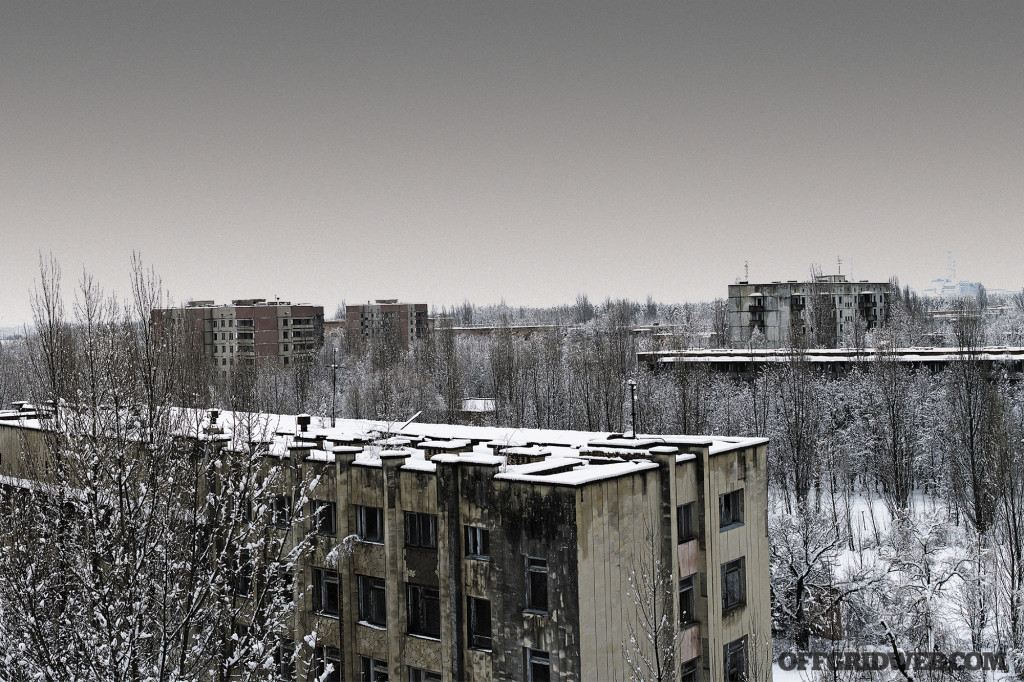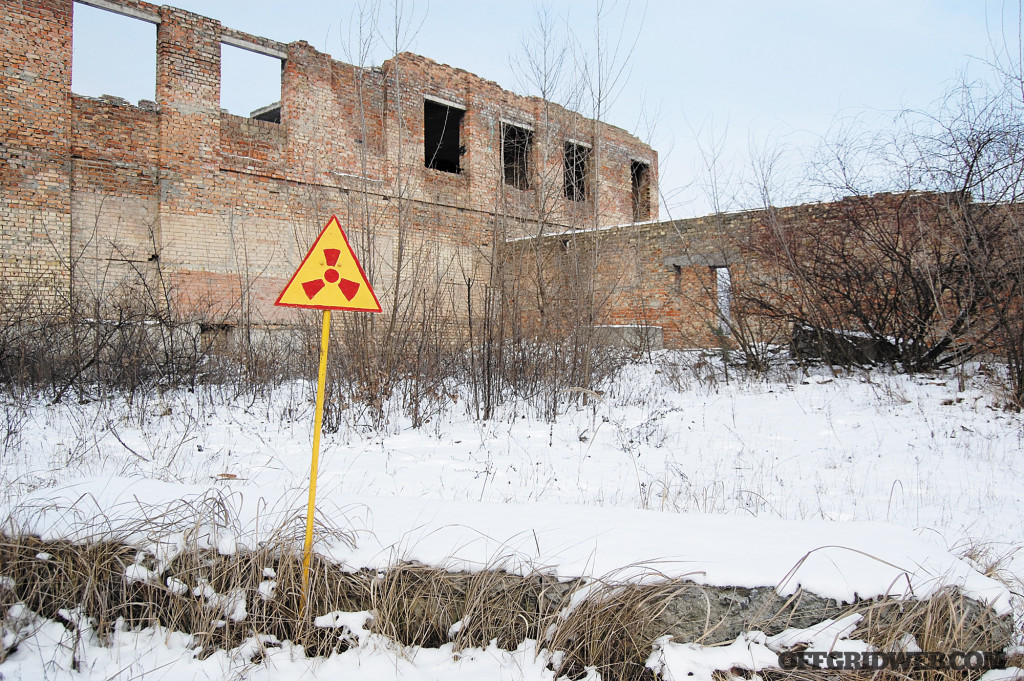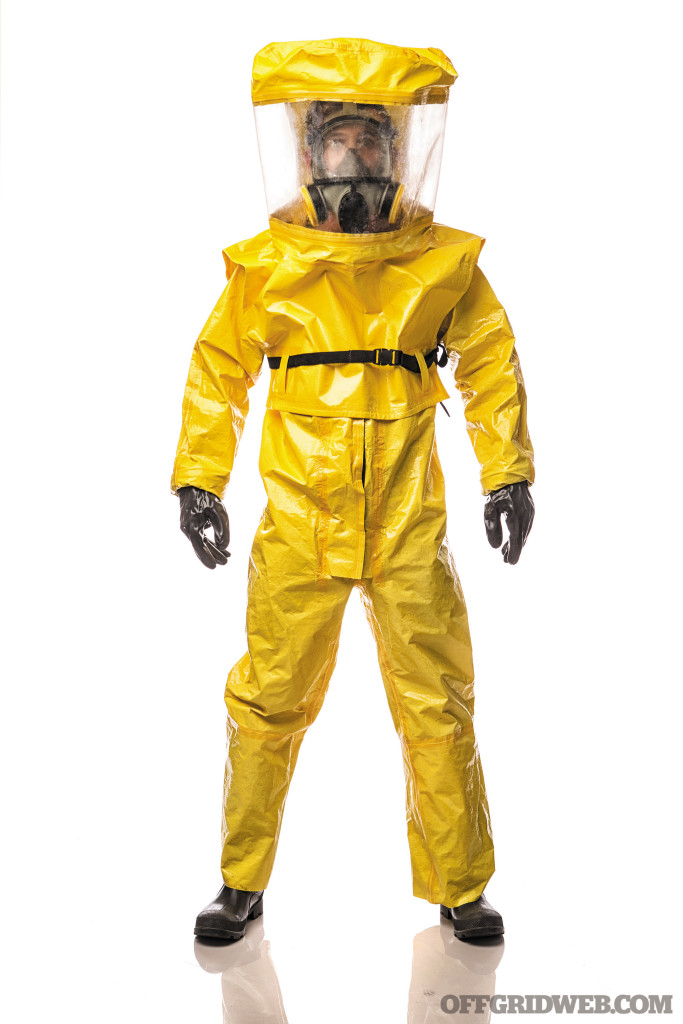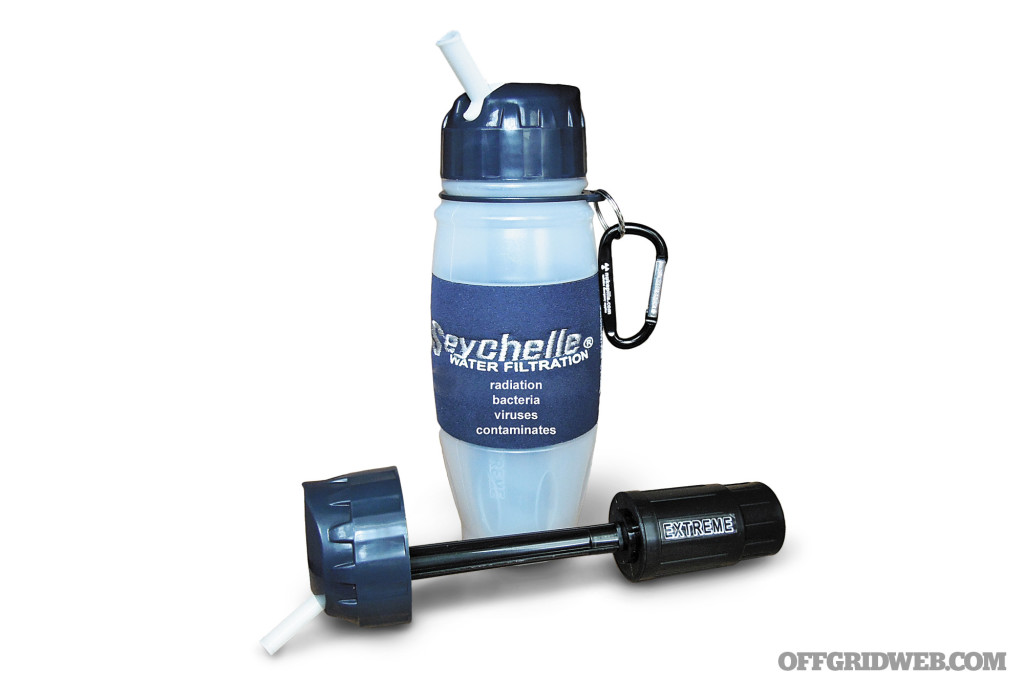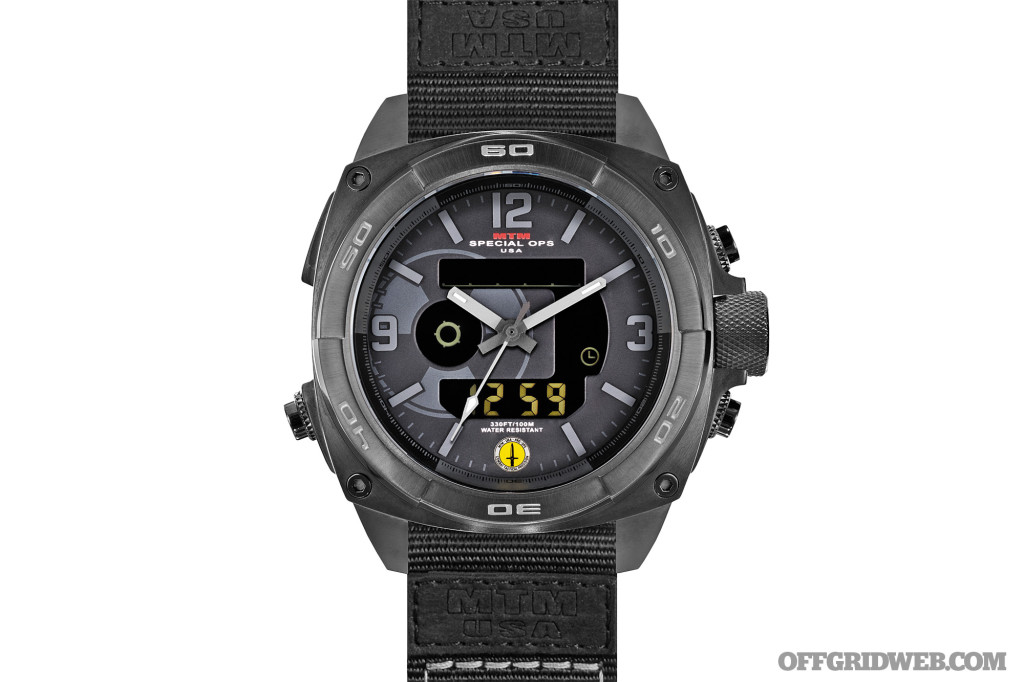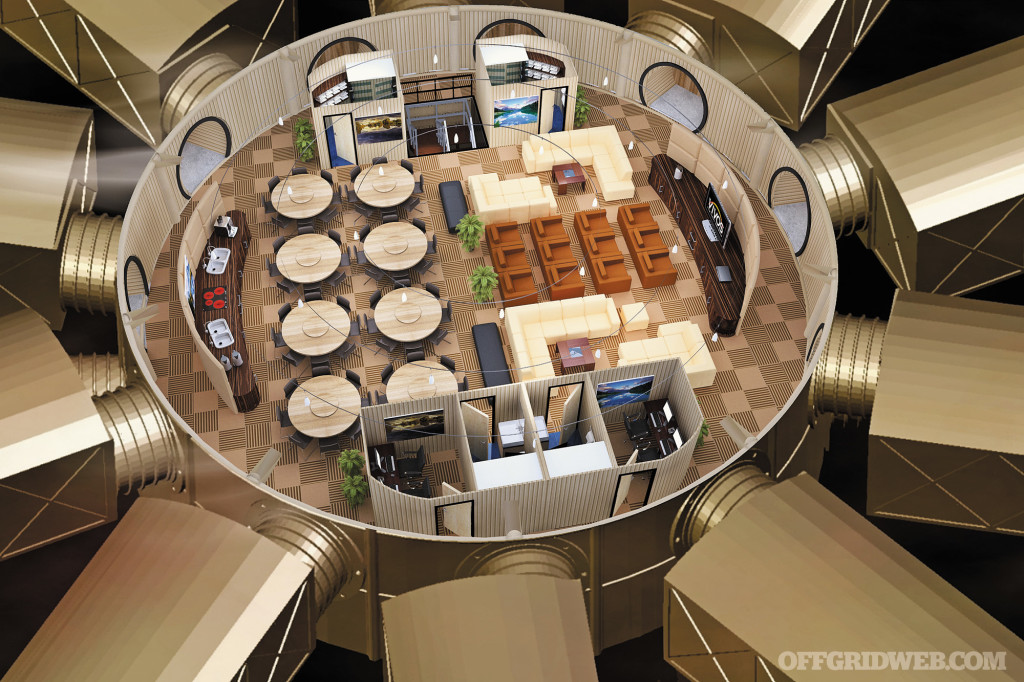In This Article
Picture this — you’re at an ATM late at night by yourself when two larger men come up behind you. At first you think it’s two people waiting to withdraw money after you, but your spidey sense tells you that something’s off and their demeanor is discomforting. You have no CCW pistol or knife on you, and you never bothered to learn martial arts. If things go south, the odds won’t favor you as the victor.
Suddenly you find yourself sucker punched in the back of the head, immediately followed by a few quick kicks to the rib cage and face after you hit the ground. Before you know it, the two assailants grab your wallet and quickly disappear into the night. Their reward? Your cash and ID. Yours? A trip to the hospital. You decide to prevent that kind of situation in the future and feeling of helplessness by taking up martial arts.
When it comes to selecting and practicing which system is right for you, the choices can be staggering. Is karate better than kenpo, or should you enroll in kali? What are the differences? How do you know if you’re really getting what you’re paying for? And most importantly, what do you hope to accomplish? Learning to defend yourself? Competing? A good form of exercise?
All these considerations may be what’s preventing you from taking that initial leap of faith, so here we’ll help take some of the guesswork out of deciding which martial arts system to go with, picking out a school, and choosing a teacher.
Cause Worth Fighting For
“There are so many benefits that I advocate everyone — old, young, male, or female — should practice at least one martial art consistently,” advises Patrick Vuong, contributing writer and founder of Tiga Tactics, a self-defense training and consulting company. “The most important reason is to develop physical skills that can be applied in a life-threatening self-defense scenario.”
Learning martial arts and combatives can take up time and money. Is it even worth it? Beyond defending your home and hearth, here are five more reasons to get with the martial arts madness.
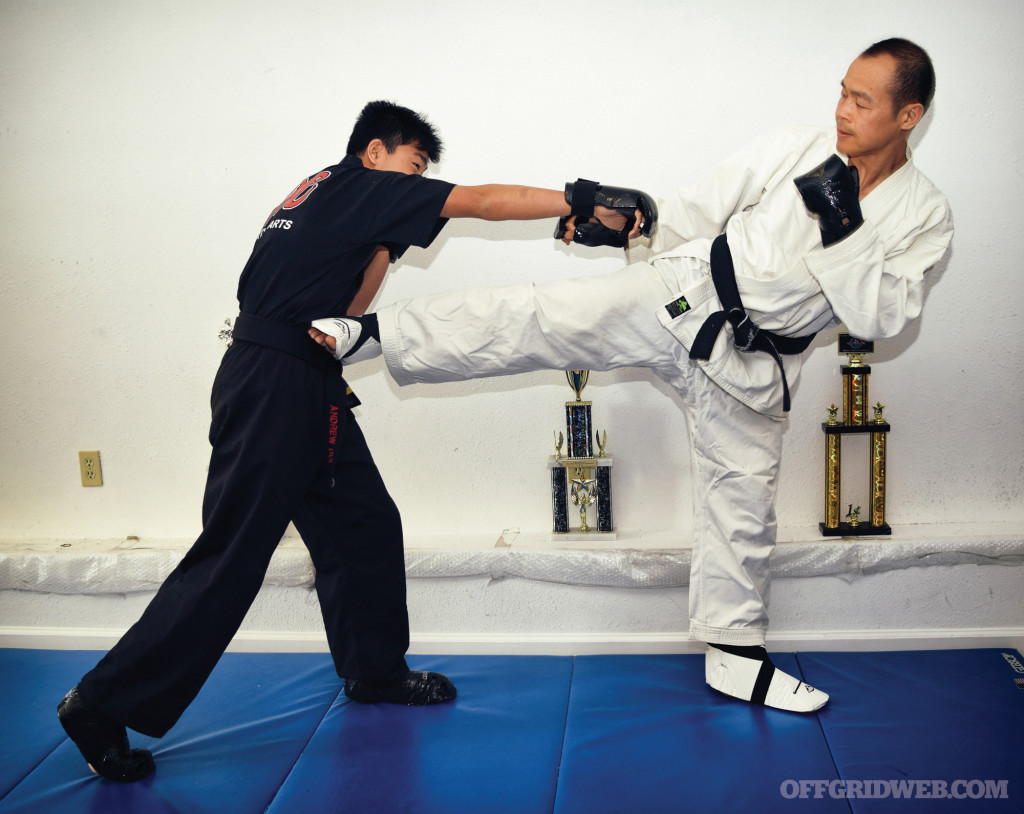
A traditional side kick is often used as a punch counter. On the streets, the same kick can be targeted to the knee...
Fit to Fight: Taking up some type of exercise (martial arts or otherwise) will reduce your chances of developing common killers like heart disease, cancer, and diabetes. The majority of us will eventually succumb to these mundane illnesses rather than a zombie apocalypse. It makes sense to prep for lethal situations, and exercise will help with the most common kinds.
Take the Chill Pill: You just had a hard day at work, your boss yelled at you, your significant other forgot your birthday. You need to let off steam in a constructive and healthy way. Here’s your solution — don the mitts and hit the heavy bag. Physical exertion in the class or gym will do wonders to bring your stress level and blood pressure down.
Confidence: It’s no surprise that thieves and bullies target the weakest-looking prey. Although their intentions are maligned, bad people tend to be good judges of your overall demeanor. Walking the streets knowing that you can defend yourself gives off vibes that will make the hooligans think twice before messing with you. Also, your newfound kickass confidence can improve all areas of your life, including home and work.
Birds of a Feather: You’ll make more friends and improve your social skills by getting off the couch and hauling your butt to class. During a crisis, having friends and being social with others will do wonders to improve your odds of survival. You may even find others who’ll become a part of your survival community — never a bad thing.
Stress Inoculation: Learning self-defense will involve training that creates anxiety and tension. This is a good thing. Sparring, force-on-force/situational training, “rolling,” or wrestling will help you deal with the adrenaline dump in volved in a crisis or violent encounter. With enough training, you’ll learn to remain calm in the eye of the storm.
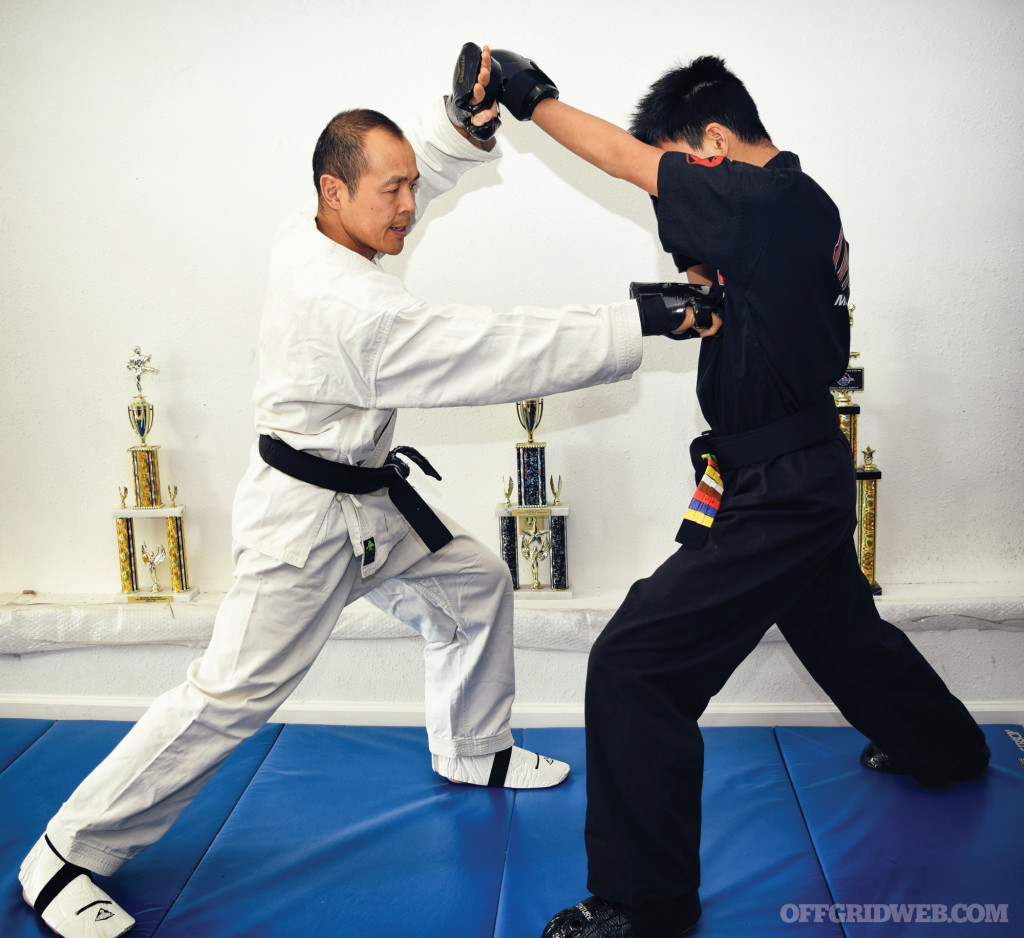
The reverse (or right straight) punch can be found in all striking arts. During his karate tournament days, the author...
What’s Your Style?
In the days of yore, finding a good martial arts teacher was about as easy as finding a unicorn. There was no Yelp or Google to search or review martial arts schools or learn the differences of the many systems. Today, just type in “martial art” and your zip code, and if you live in a metropolitan-ish city, you’ll see plenty of schools in your area. Then, it’s a matter of understanding the basic differences.
Martial arts can be divided roughly into three major categories: traditional/cultural arts, sport, and self-defense/combatives. Before we get hate mail about the three categories, please understand that the line is clearly … ahem … blurred. Each category shares attributes of the other two. Think of three circles that overlap each other. Sport practitioners often acknowledge their cultural roots and learn self-defense. Combatives arts borrow techniques and training methods from both sports and traditional arts. And, of course, the traditional arts can feature combatives and a sport aspect. Please remember that these categories are a means of explaining some general (very general) categories of the martial arts.

Each category of martial arts shares elements of the others. Training in any art will improve your fitness and make you...
Traditional: Remember Your Roots
Traditional/cultural arts have been around a long time because these arts have systematized (and eventually formalized) the art of combat. Most arts from Asia are considered “traditional” arts. In fact, they’re considered the most popular type of arts and can be found at your local strip mall and recreation center.
Brand Names: aikido, hapkido, ju-jitsu, karate, kenpo, kung fu, pekiti-tirsia kali, tae kwon do, and tai chi.
The 411: When you start class in a traditional art, you’ll most likely need to purchase a uniform that may resemble what you saw in the Karate Kid movie. You may learn respectful etiquette (such as bowing) and new terminology from your art’s home country. You’ll usually learn combatives techniques with partners. The majority of traditional arts also practice these techniques individually in set patterns called “kata” in Japanese and “hyung” in Korean. You may also learn traditional weapons like the staff, sword, or spear.
Leg Up: The biggest advantage of training in traditional arts is summarized in one word: convenience. You can find a traditional martial arts school almost anywhere, including Rural Town, USA. Traditional arts, when taught correctly are also very safe because many traditional systems offer cooperative technique training where little to no resistance is expected from your partners, allowing for the safe practice of techniques.
There may also be a benefit of learning another country’s culture and terminology. For the kids, traditional arts excel at teaching them discipline, respect, and perseverance — life skills.
Throw Down: The bulk of traditional systems were at one time revolutionary, but as the years passed, many systems have become stagnant and out of touch with modern advances in training science and technology.
Above: Many martial arts offer self-defense. Combatives training simply focuses on that aspect. Here, Bui practices kicking to the groin off a hammer strike. Situational training like this creates muscle memory for when SHTF.
Sport: Fight to Win
Wrestling is likely the first combative sport after two prehistoric siblings started rolling on the ground vying for dominance. The modern-day Olympic committee recognized wrestling as a sport in 1896. Soon after, other disciplines were recognized, such as boxing in 1904, judo in 1964, and tae kwon do in 2000. Fencing and shooting can also arguably be categorized as combat sports. Then, on a fateful November back in 1993, eight combatants from different disciplines (including kickboxing, boxing, karate, and Brazilian Jiu-Jitsu) met inside a chain-linked cage to determine who was the “Ultimate Fighter,” and thus was born the Ultimate Fighting Championships (UFC). Today mixed martial arts (MMA) is one of the fastest growing sports around the globe.
Brand Names: boxing, Brazillian Jiu-Jitsu (BJJ), judo, kickboxing, MMA, Muay Thai, Olympic tae kwon do, and wrestling.
411: A combat sport class usually starts with a warm-up designed to get you sweaty (to condition you and warm up your muscles, for injury prevention). Depending on your selected art, you’ll likely learn to punch (boxing), kick (kickboxing and tae kwon do), throw (judo), wrestle (um … wrestling?), lock up a joint on the ground (Brazillian Jiu-Jitsu), or all the above (MMA). You’ll likely experience sparring where your partner is resisting your techniques while attempting to apply their own.
Leg Up: Looking to K.O. an attacker along with your own subcutaneous adipose? Look no further than combat sports. Because this is a sport, there’ll be plenty of conditioning, often involving the latest workout methods like high-intensity interval training (HIIT). Burning fat along with learning combative skills make the combat sports a fast-growing segment of the workout industry.
Along with the workout, fully resisting partners will help you deal with the stress encountered during any stressful calamity. Fully resisting partners can be unpredictable, and dealing (calmly) with that unpredictability can be the ace up your sleeve in a self-defense situation. Like to compete? There are numerous tournaments across the country in almost any combat sport you choose. And competition will also help prepare you for the streets by inoculating your nervous system to the adrenaline dump. As combat sports become more popular, you’ll see more and more gyms popping up.
Throw Down: Every sport has rules to keep the competitors safe. As long as sport participants are aware of the safety shortcomings of their sport, they can become effective on the street. Say you joined a boxing gym because it’s close to home, no problem. Just be aware that on the street, there may be multiple attackers, ground fighting, and weapons attacks. Simply plug those holes by cross-training when you can. Also some sport gyms (especially MMA and BJJ gyms) can get quite expensive. If cost is a concern, it’s a good thing you can find wrestling, judo, and boxing in most metropolitan recreation centers. Also, injury may be an issue with sport combatives (especially with age), since participants often train at or near their maximum intensity.
Above: Looking to defend against edged-weapon attacks? Speak with potential instructors to see if they offer this as part of their curriculum.
Combatives: Bare-Bones Beat-Down
Combatives (aka close-quarters-combat or CQC) is the third ring of the martial arts. Not to say that traditional arts or sport-oriented artists can’t fight; combatives merely focuses on the martial and not so much the art. Combatives is a relatively recent term, and American combatives largely started in the World War II era, with William E. Fairbairn and Erick A. Sykes (of the famous Fairbairn-Sykes fighting knife). Their goal was to teach no-frills techniques and training against common attacks.
Brand Names: combatives (every branch of the military has their own program), defendu, jeet kune do, kappa, krav maga, self-defense, and SPEAR system.
411: If you’re able to find a combatives school, more power to you! Of the three, combatives may be the hardest to find. There’ll likely be a lack of uniforms and formality. Forget about bowing and dispensing of Mr. Miyagi-style wisdom. After a brief warm-up you’ll likely go straight to the palm smash, hammer fist, or eye gouge. As you advance, you’ll learn to use your elbows, feet, knees, and basic grappling. The use of modern-day weapons (blunt, edged, and firearms) may be taught, but certainly the defense against these weapons will be practiced.
Leg Up: Straight up, if your primary goal is to defend yourself, this is the category you want. Combatives systems are often based on military or law enforcement programs, so the techniques and training methods are pressure-tested in the field. The limited curriculum makes these systems easy to learn, and training will often include situational awareness, verbal conflict resolution, and conditioning.
Throw Down: The most difficult part of combatives training is finding a school nearby. Krav maga is the closest thing you can get to a commercial combatives school. Not only can it be difficult to locate a combatives school, but you want to “be wary of instructors who claim to have taught elite military and law enforcement without verifiable proof,” Vuong says. “It’s easy for shysters to get away with these false claims, because they claim their past is too classified.” Also, because of its very nature, combatives curriculums often have limited techniques (and for the street, that’s a good thing), making the classes repetitious and potentially boring in the long run.
Keep in mind these are general categories and provided as a simple reference. All martial arts systems will give you the benefit of a good (or great) workout and provide the practitioner the added benefit of self-defense skills.
Above: Patrick Vuong, contributing writer with instructor rankings in kenpo karate, Lai Chung Chuan Fa, and Pekiti-Tirsia Kali, teaches a student the finer details of jabbing the eyes. A strike like this can incapacitate the biggest of attackers.
The Right Stuff
With so many types of martial arts out there, how does one go about finding a school? Glad you asked, because a good school can positively change your life. The first thing to do is ask around. You probably have a buddy who’s currently training. Get their advice and see if you can tag along to watch a class or two. Hooking up with a buddy for your training will improve your friendship, and give you someone to hold you accountable to attend classes.
We also recommend that you go online and check a school or gym’s reviews. Too many complaints mean that you should move on to research another place. Another thing to consider is proximity. If the gym is too far away, chances are slim that you’ll want to continue year after year, and consistency in this world is very important.
Trainer Danger
How do you know if a teacher is any good? “Selecting a good teacher is the same as selecting a dentist, mechanic, or lawyer — do your due diligence lest you get swindled, or worse, injured,” advises Vuong. First, do an online search on the instructor. Are there any complaints about how he or she teaches? Are there too many injuries? Did their name show up in the local paper as a child molester?
Get the right intel before spending your time and money. Ask to observe a couple of classes or sign up for the introductory lesson. Make sure to observe the teacher’s mannerisms. Is the teacher helpful and patient? “The teacher must be able to offer an insightful class that’s also challenging, fun, and safe,” says Vuong. Lastly, talk to the students. Are they friendly and polite? Make sure you get a good vibe and feel safe at all times during your initial visit(s).
Getting the Most Out of Your Lessons
Above: Muay Thai (aka Thai boxing) and MMA are two sports where you can strike your opponent full force with an elbow, legally. Pictured is Muay Thai coach Conrad Bui holding pads for Bellator MMA fighter Diego Herzog. Hitting pads allow for full contact training without the injuries.
You found a good school or gym to join and a talented teacher to learn from; now it’s time to maximize your money and time by becoming the best student you can be. Our biggest piece of advice is simply to show up for class. That’s it. Simple. No pressure to perform, just show up and you’ll improve your physical fitness and your defensive capabilities. If there’s one secret in the martial arts, it’s consistent training.
Second, find time to practice outside of class, even for just 10 or 15 minutes a day. This will help reinforce your lessons, improve your fitness, and make your teacher happy. No teacher likes to repeat a lesson over and over again.
Third, ask questions. If a lesson isn’t clear, ask. Keep in mind that some teachers want you to wait until after class to ask questions. Finally, keep a notebook of your lessons. Taking notes will provide a mental review of the lesson and also serve as a manual for training later on. And above all, have fun. If you don’t enjoy it, you won’t do it for long.
Five Martial Arts Training Myths
#1 – Multiple Opponent Mayhem: Bruce Lee made it look so easy beating down a mob of bad guys. For us mere mortals, taking down one opponent can be a challenge, let alone two or three. When the odds are stacked against you, the strategy turns from dominance to survival. If you’re faced with multiple attackers, there are tactics that’ll improve your odds of coming out alive, but running (if you can), will improve your odds the most.
#2 – Deadly Serious: You may have heard that there is no room for fun when training deadly combatives. Although the subject of combatives is serious, training should remain safe and fun. Getting stressed from the teacher or coach mercilessly yelling at you isn’t necessary (that’s what drill instructors and spouses are for). Also, being stressed from the threat of injury while training is another red flag to leave the school and find greener pastures. The bottom line: If you don’t feel safe and aren’t having fun, you won’t stick with it.
#3 – Ineffective: Those pajama-wearing wannabes can’t fight their way out of a paper bag. Wearing the traditional martial arts uniform may look silly, but make no mistake, the majority of traditional arts train hard-core combative techniques that’ll work in the ring or on the street. Punches, eye gouging, and groin kicks (that’ll drop any assailant like a bad habit) are common in many arts sporting the “jammies.”
#4 – Costly Combatives: Some people are turned off by the price of going to a high-end gym or school. Don’t let this excuse stop you from developing fists of fury. If you’ve the will, you can find training at a low cost or even free. Look online for meet-up groups with free or discounted training. Sure, you might train in the park or in someone’s garage, but the training is there.
#5 – Afraid of Commitment: We get it, you’re busy. You have work, family, and other commitments. There might seem to be no way to squeeze in a workout, but it’s all about setting priorities. We bet if you make training high on your list, you’ll find time to turn off Game of Thrones and start kicking it.
Finish Him!
Learning some form of self-defense (armed and unarmed) is highly recommended. You don’t have to be Batman or Captain America to protect yourself, your family, and your supplies in a life-threatening scenario, but every bit of training will help. Getting off our duffs, breaking a sweat, and learning the skills to survive works for us, and it’ll work for you.
About the Author
Dr. Conrad Bui, is a San Francisco-based doctor of chiropractic and frequent contributor to RECOIL OFFGRID. A former bouncer, he knows first-hand the effectiveness of martial arts for the streets. A self-proclaimed martial arts and combatives junkie, he won gold medals in the featherweight and absolute (unlimited weight) brown belt divisions at the 2017 Brazilian Jiu-Jitsu American Cup. As a longtime student and teacher of martial arts and combatives, he’s a certified full instructor in Indonesian Silat Serak, Filipino Kali, Bruce Lee’s Jeet Kune Do, and Muay Thai and holds a fifth degree black belt in tae kwon do.
Sources
More From Issue 27
Don’t miss essential survival insights—sign up for Recoil Offgrid’s free newsletter today!
- Chiappa Little Badger: Building a Survival Hunting Rifle
- Book Review: “Irish Republican Army Manual of Guerrilla Warfare”
- Debunked: Preventing Infection by Rinsing with Seawater
- Review: Jackery Explorer 500 Solar Generator
- Off-the-Grid Dentistry
- Storm Preparedness Lessons from Hurricane Irma Responders
- Defeat the Darkness: Survival Headlamp Buyer’s Guide
- Fire Suppression 101: Protect Your Home from Wildfires
- Thomas Coyne Spotlight – Never Tell Me the Odds
- Which Martial Arts System is Right for You?
- The Will to Drive On: Emergency Driving Skills
- Pocket Preps: Wallet-Sized Tools
- What If Your Vehicle Is Attacked By an Angry Mob?
- Issue 27 Gear Up
Read articles from the next issue of Recoil Offgrid: Issue 28
Read articles from the previous issue of Recoil Offgrid: Issue 26
Check out our other publications on the web: Recoil | Gun Digest | Blade | RecoilTV | RECOILtv (YouTube)
Editor’s Note: This article has been modified from its original version for the web.

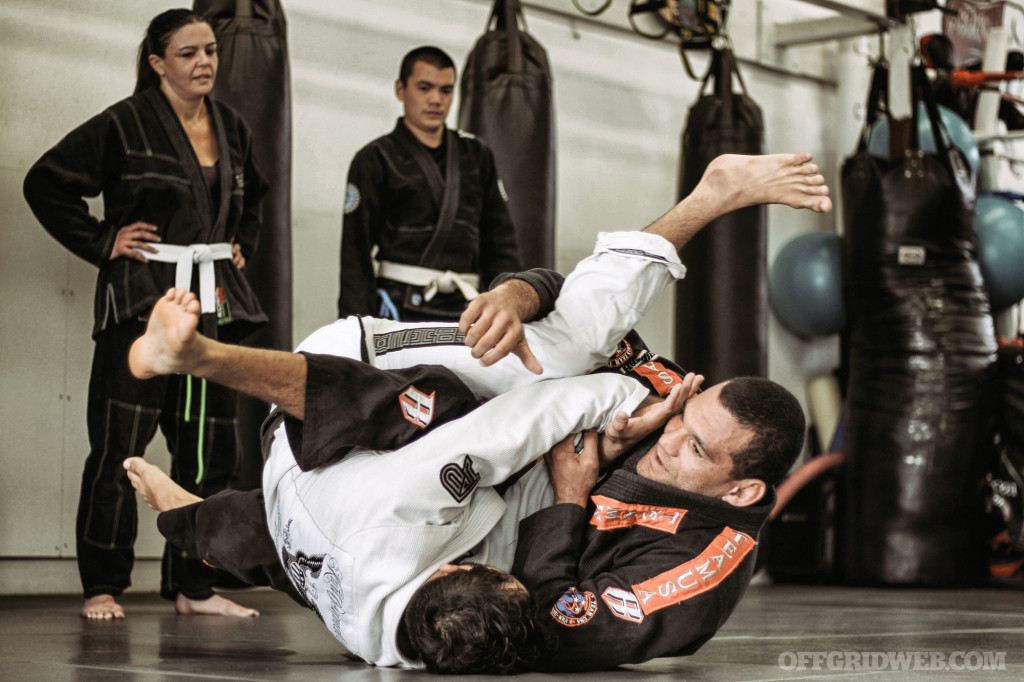
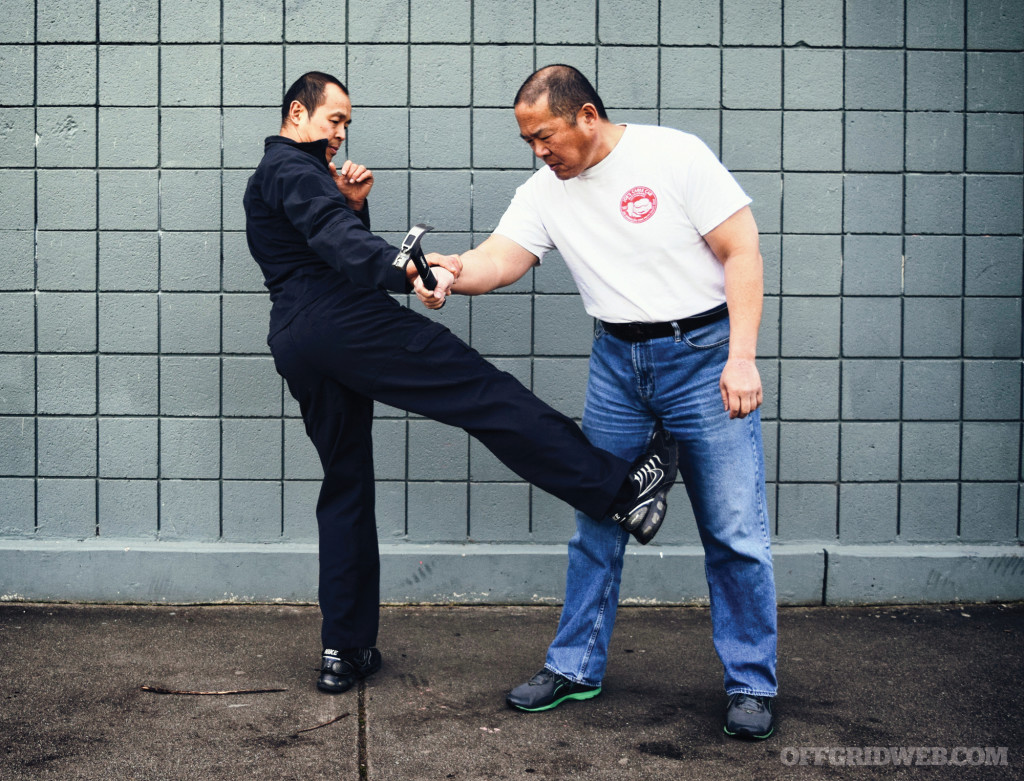
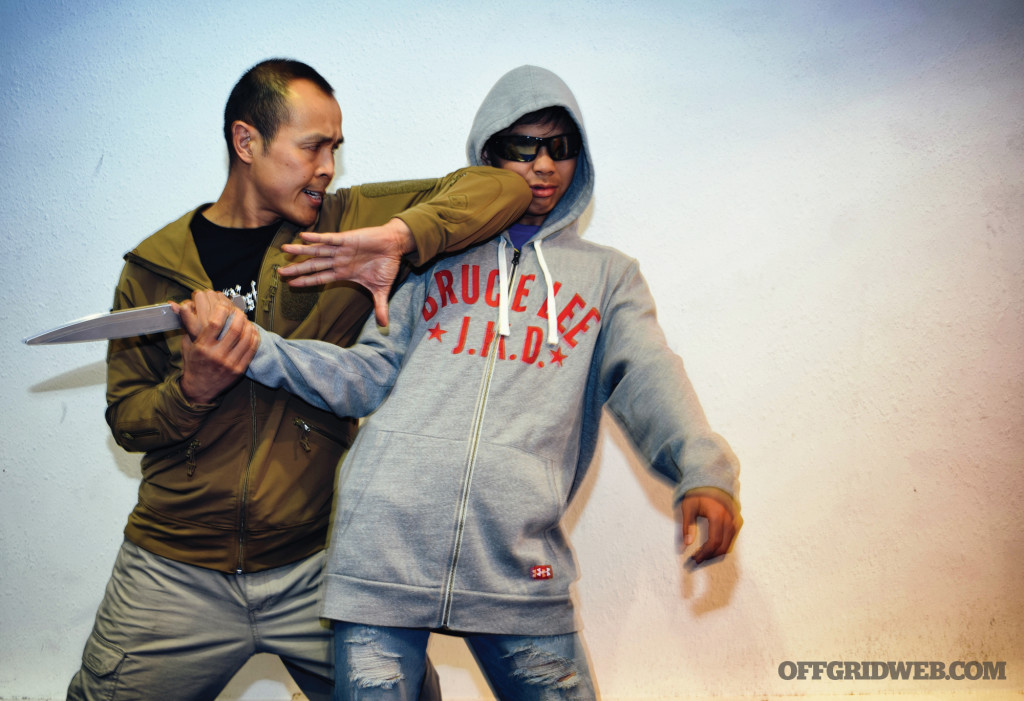

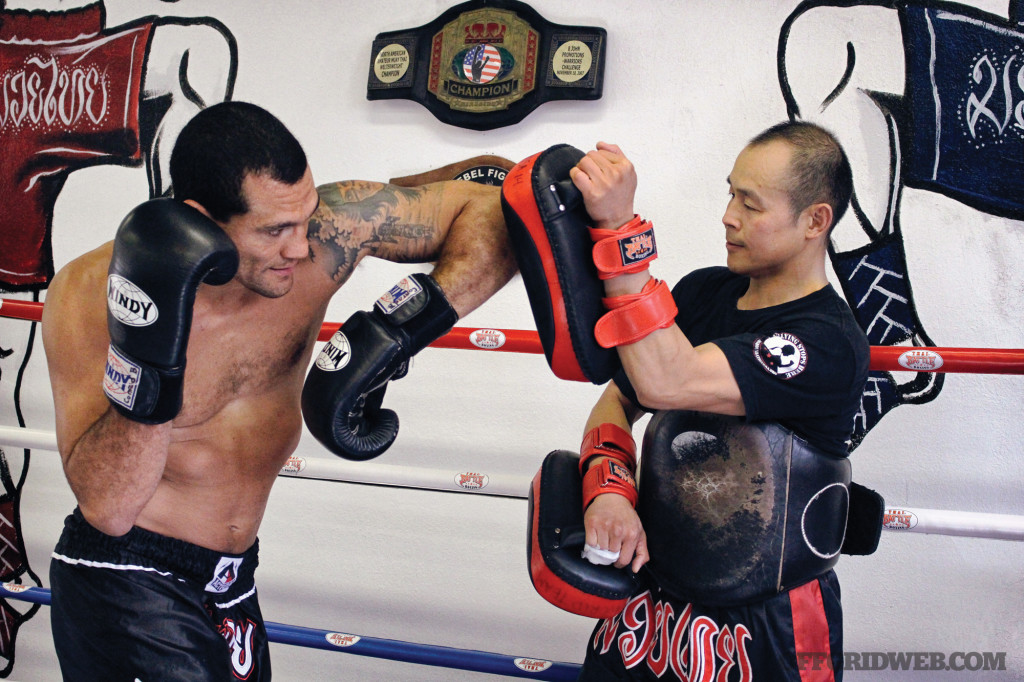
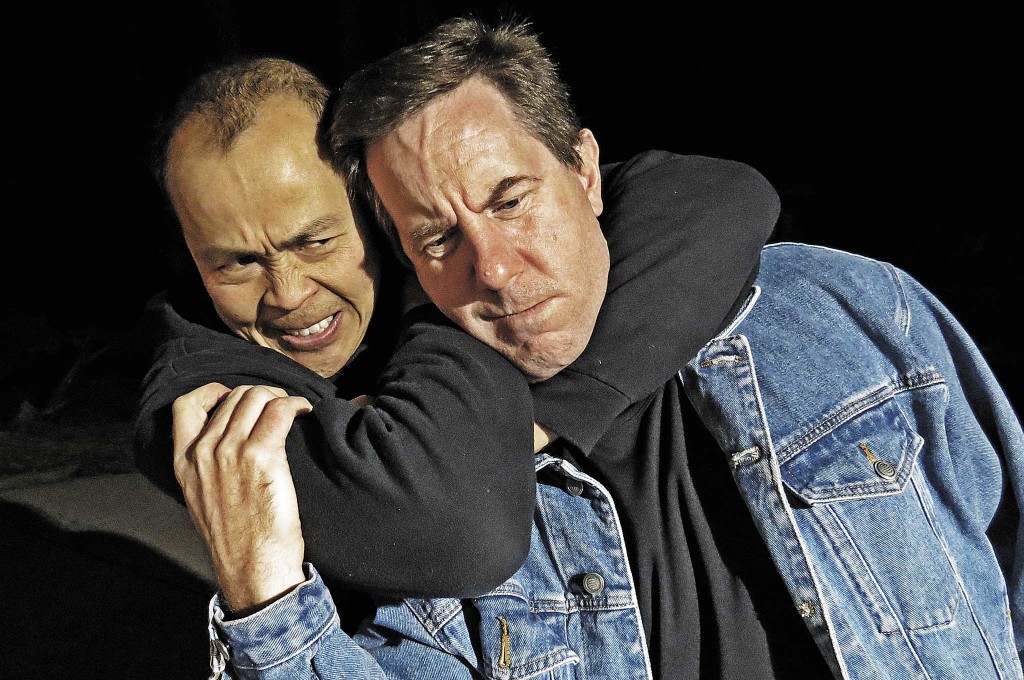
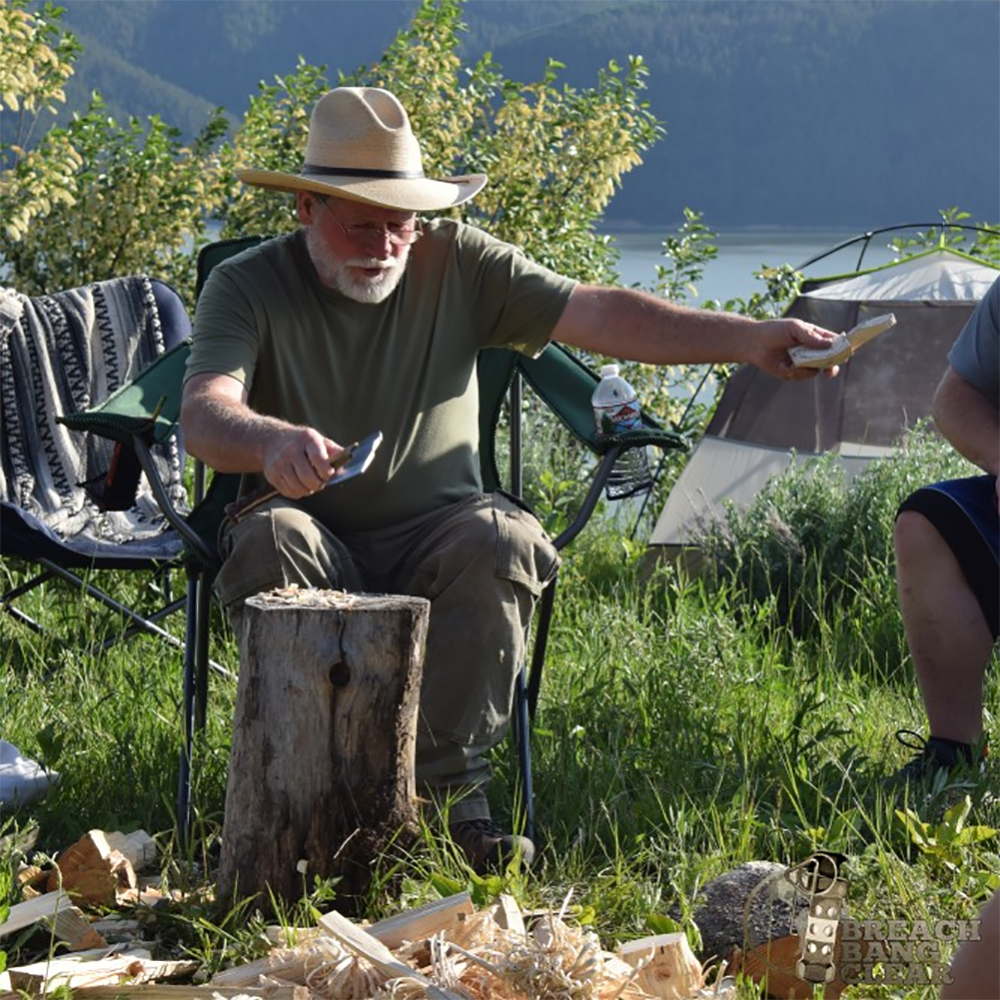
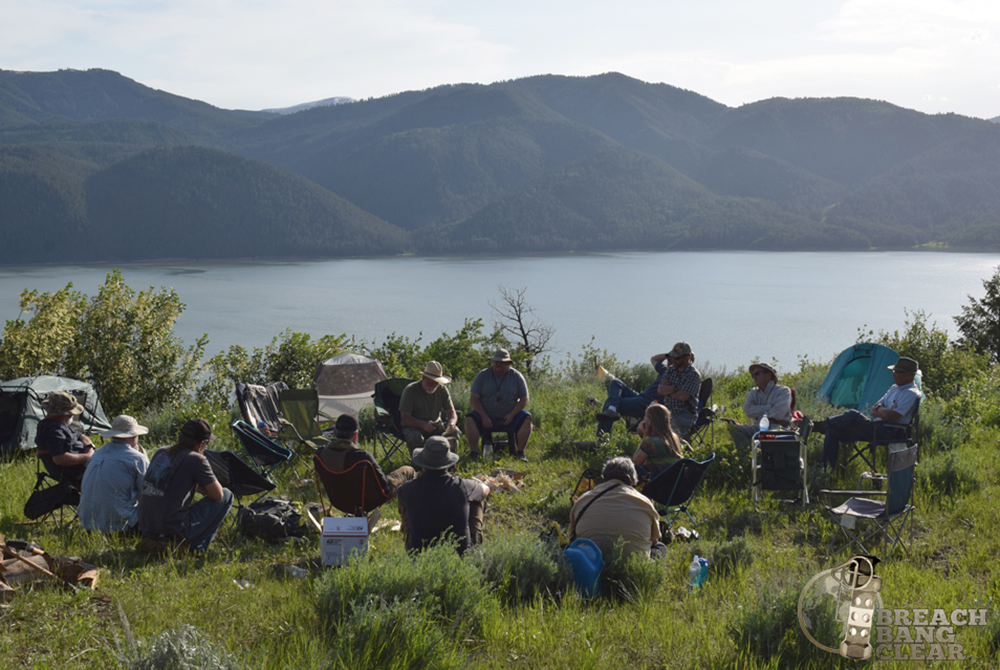

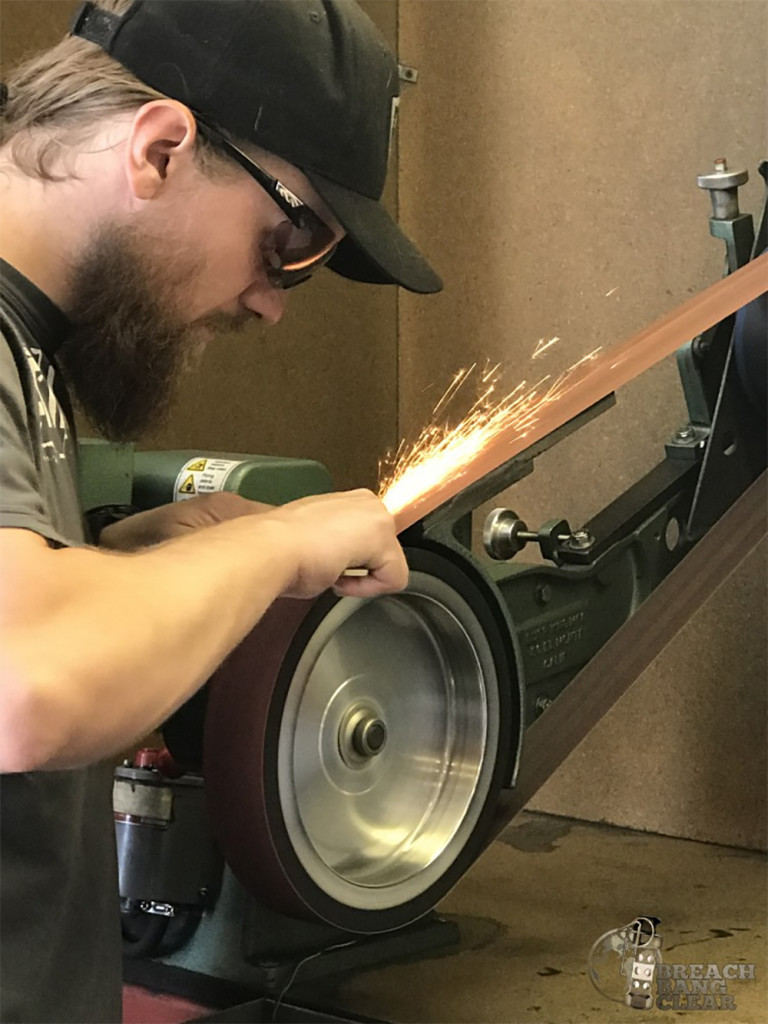
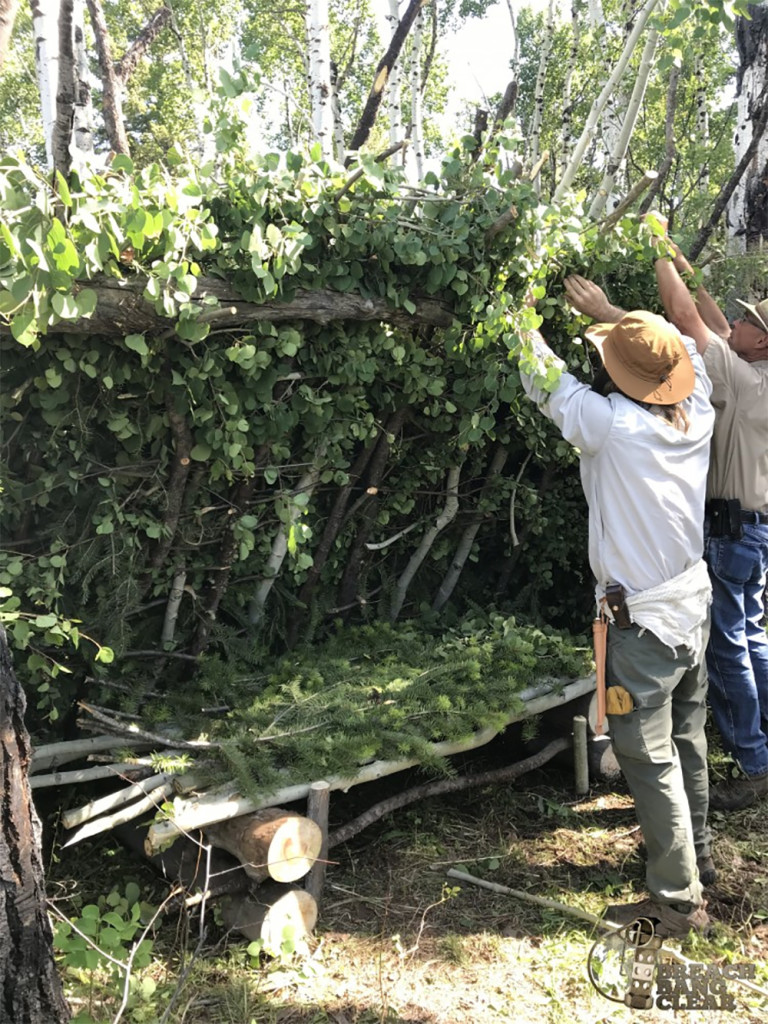
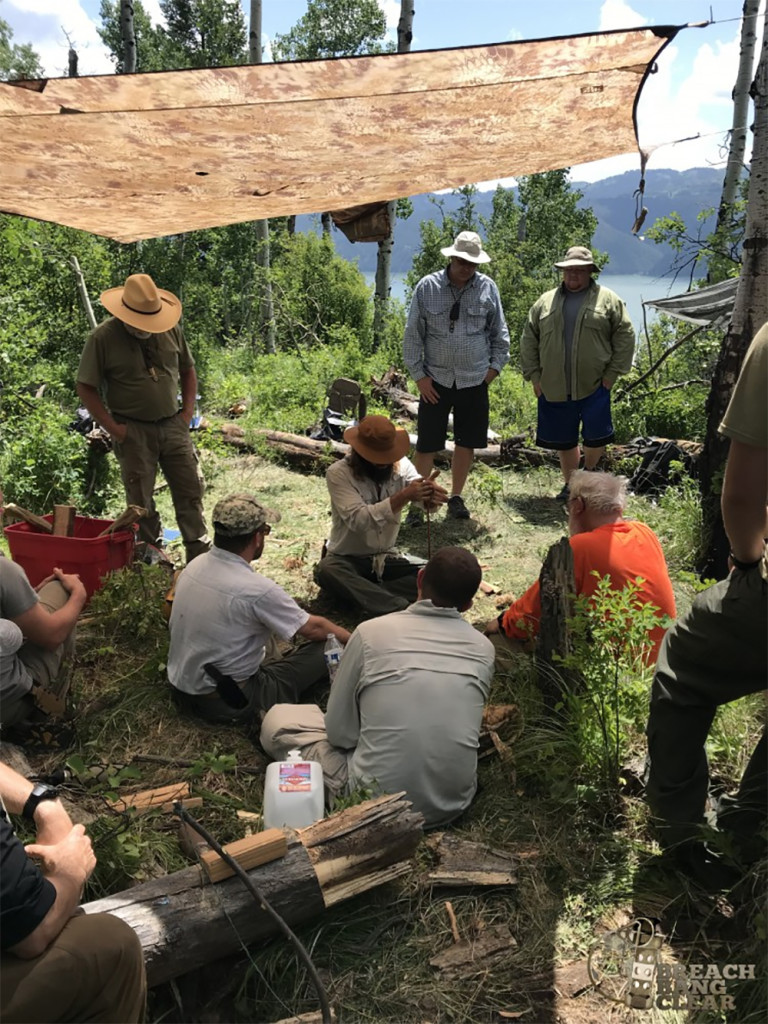
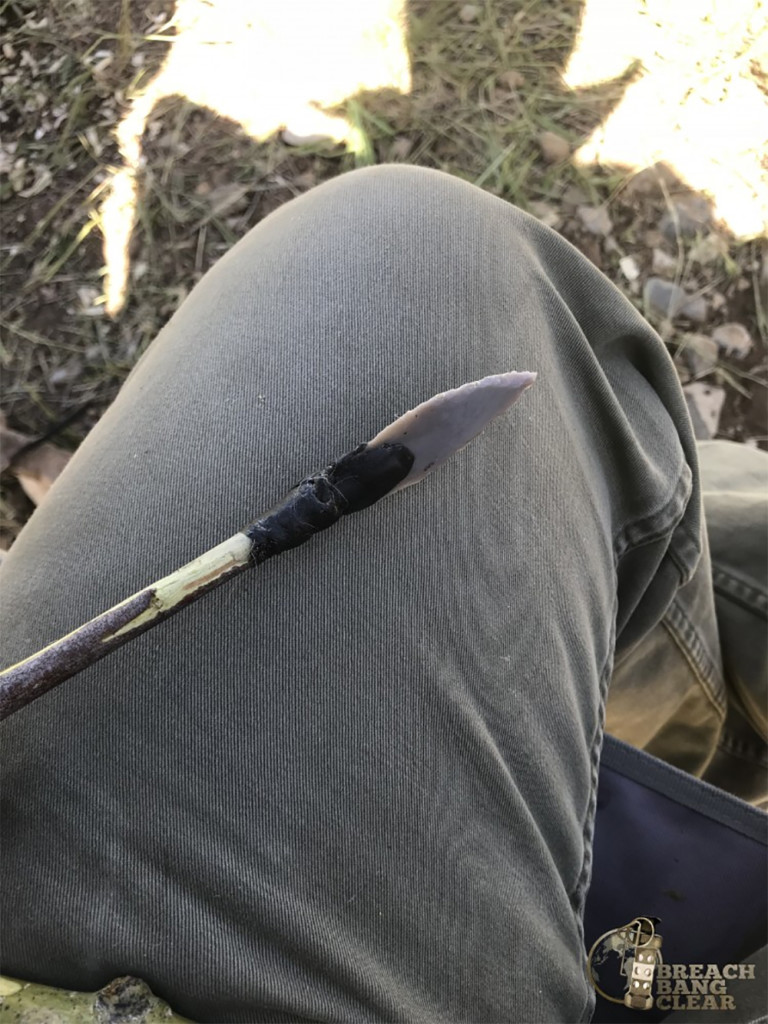
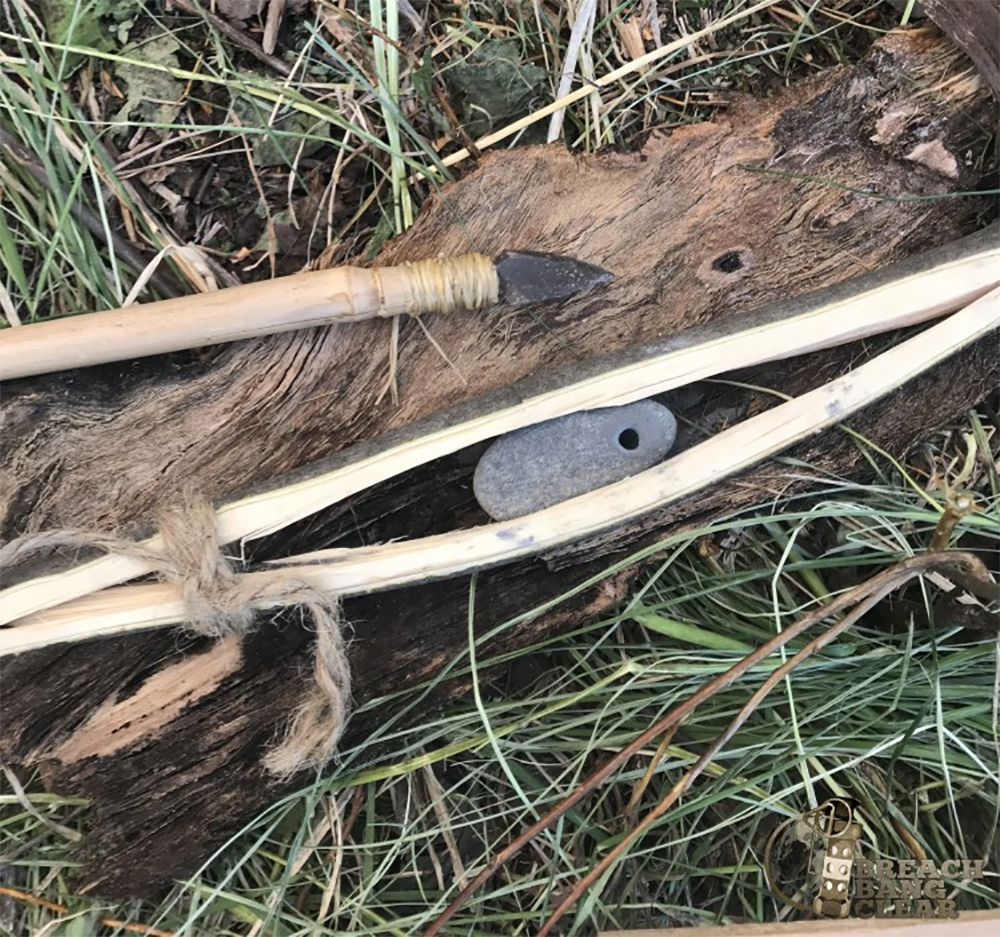
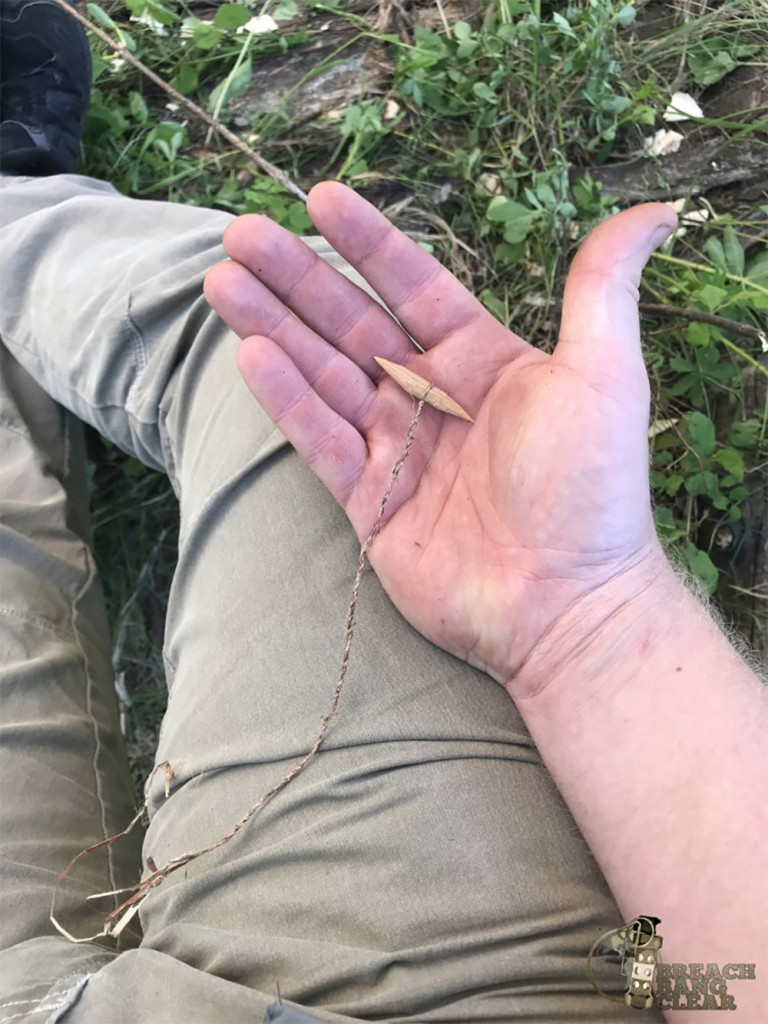

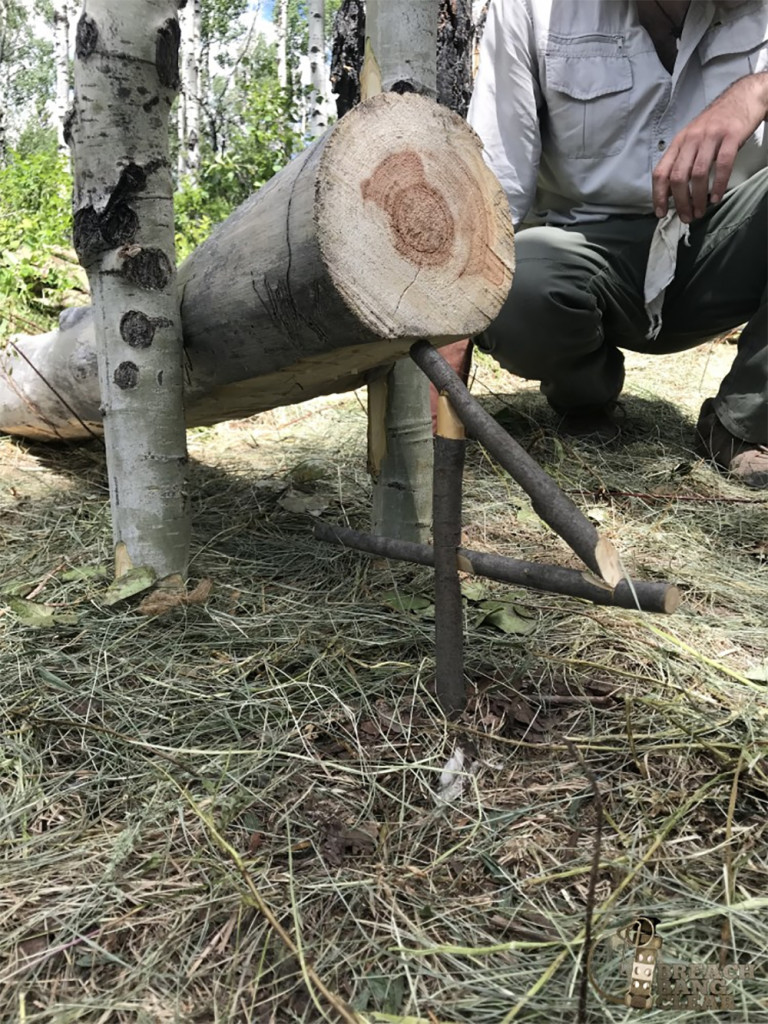
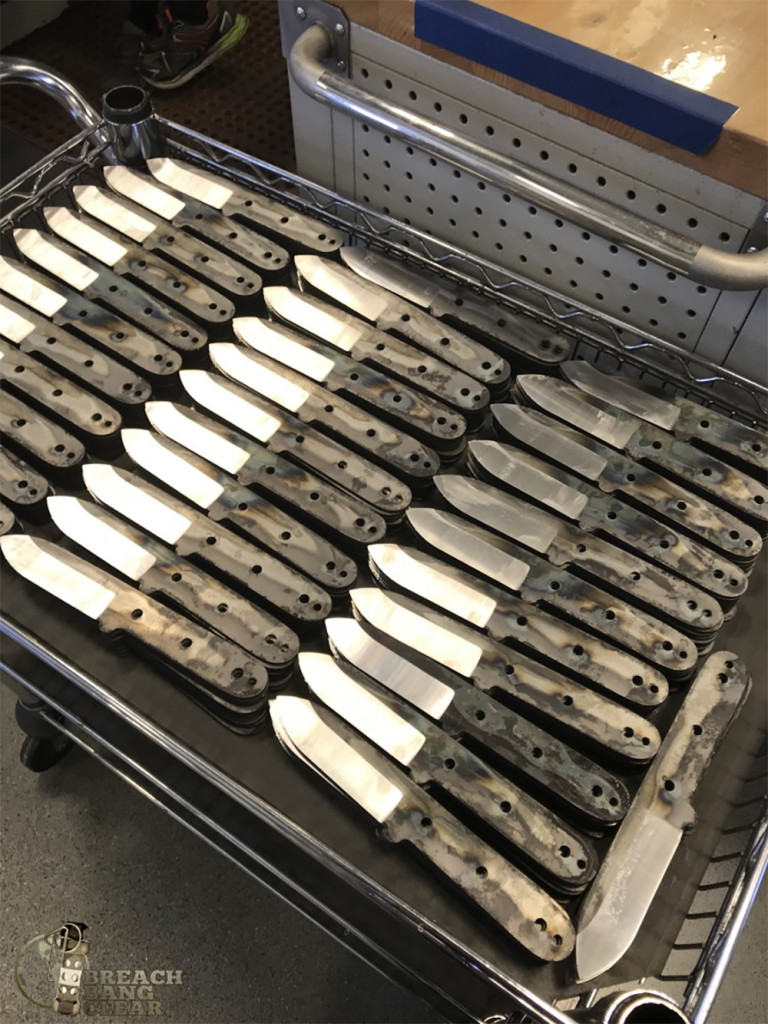
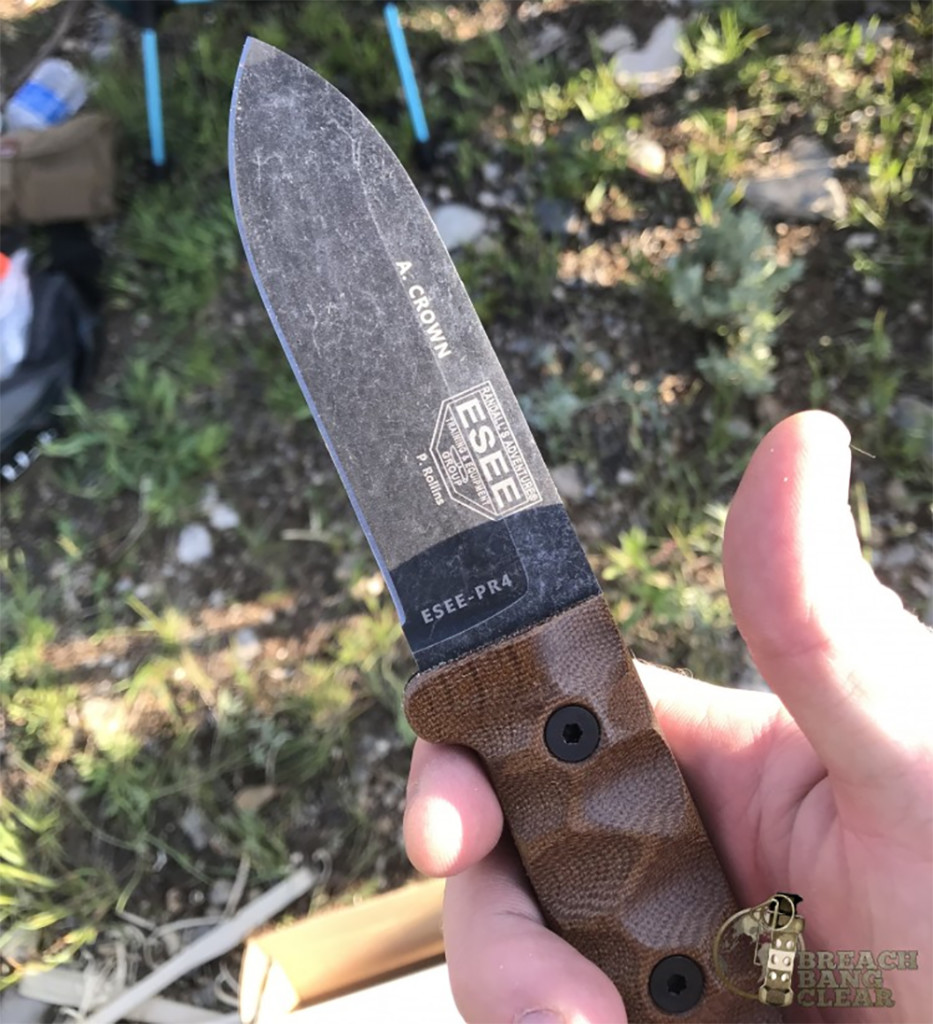
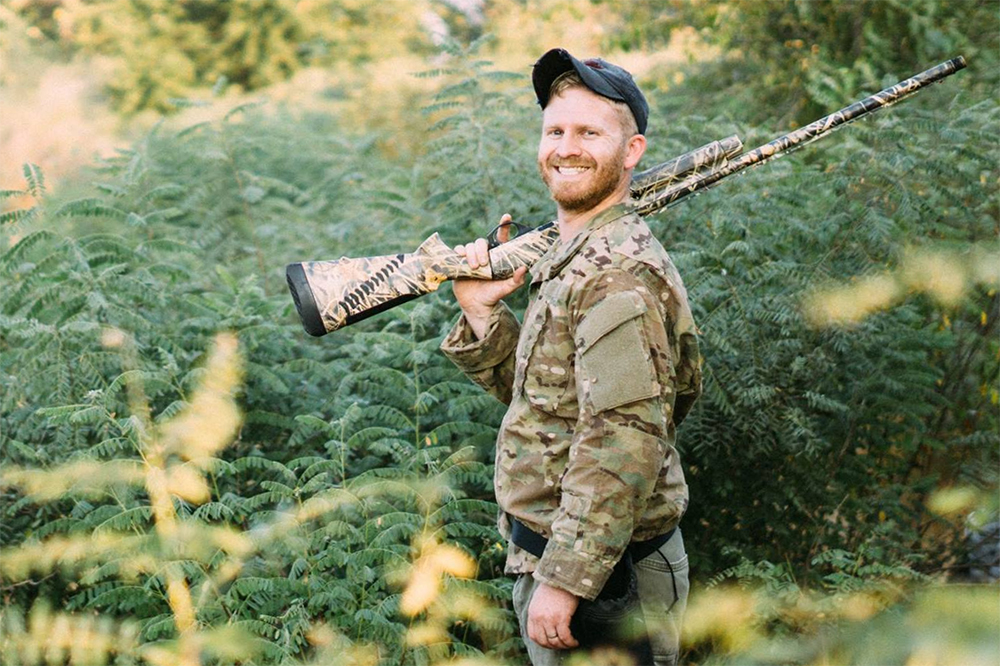
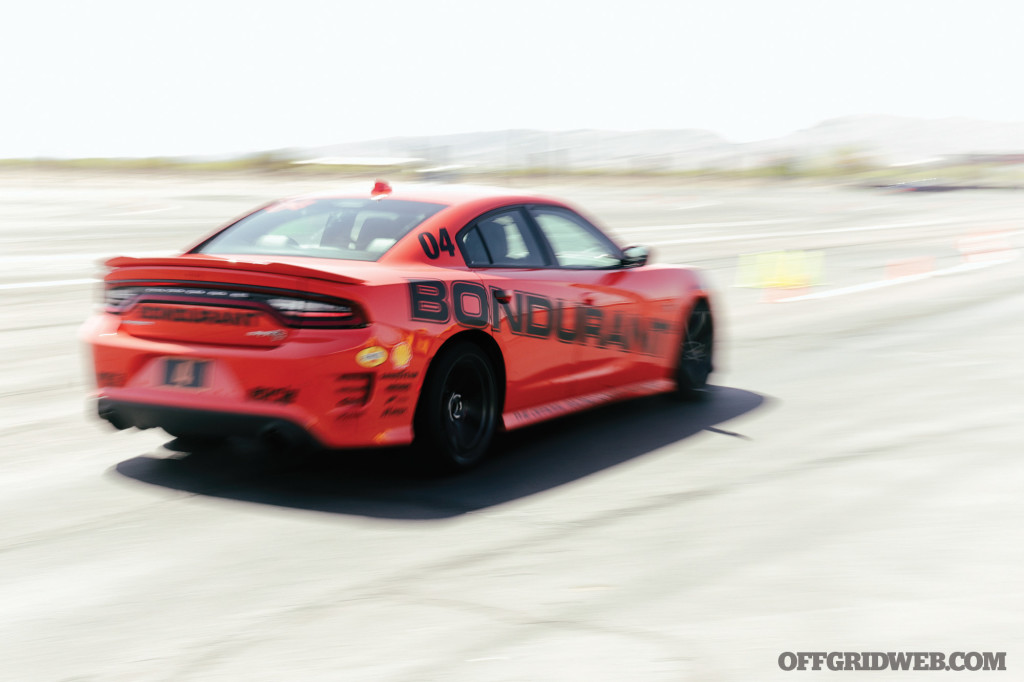
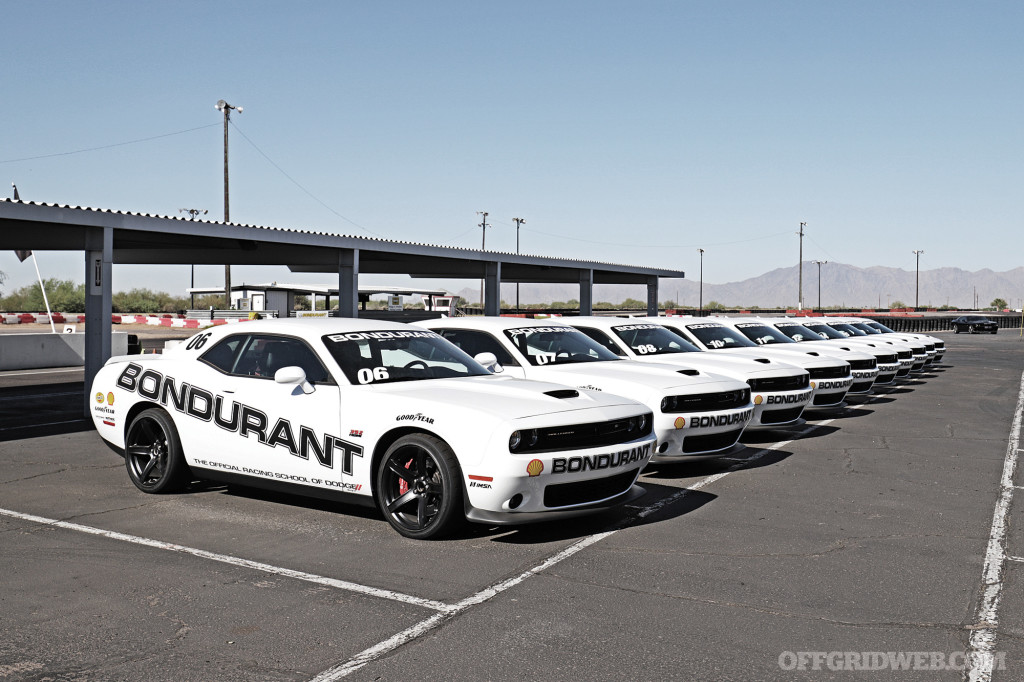






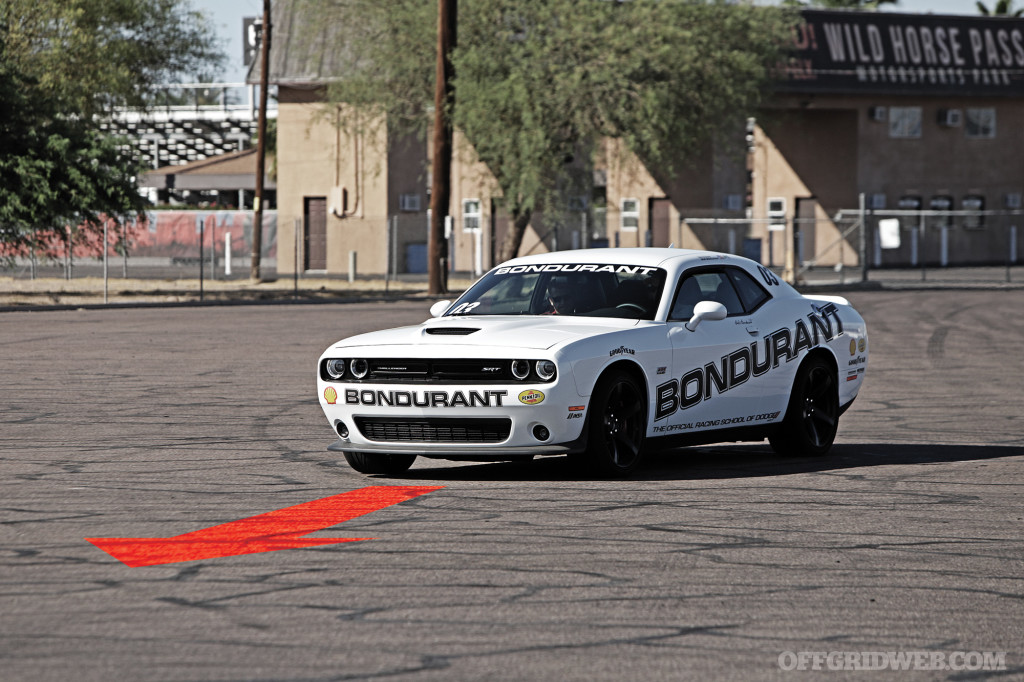
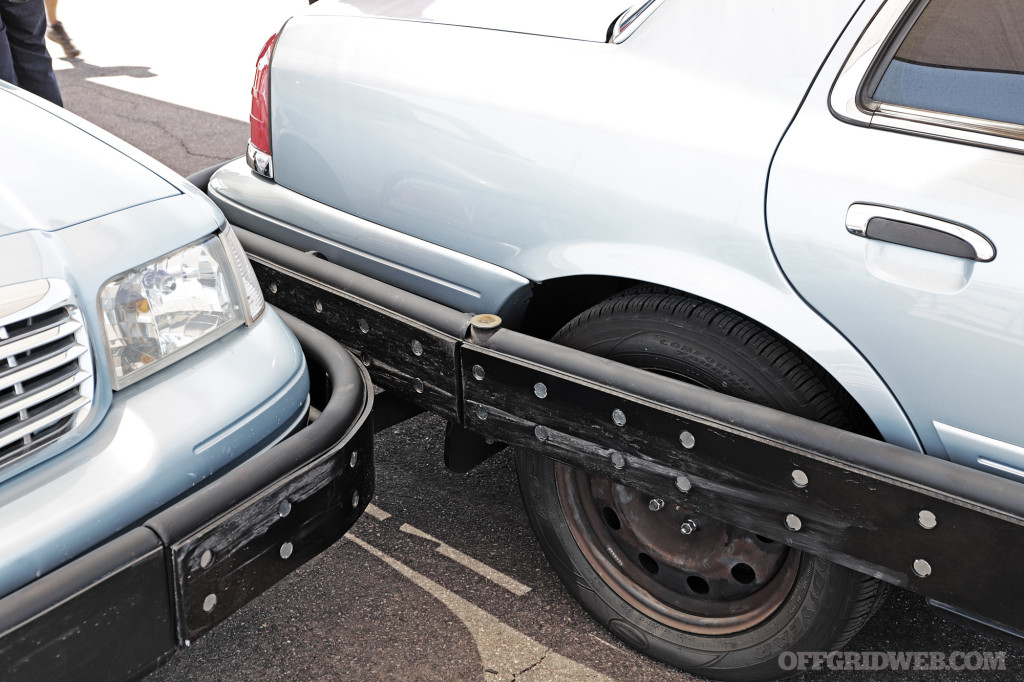






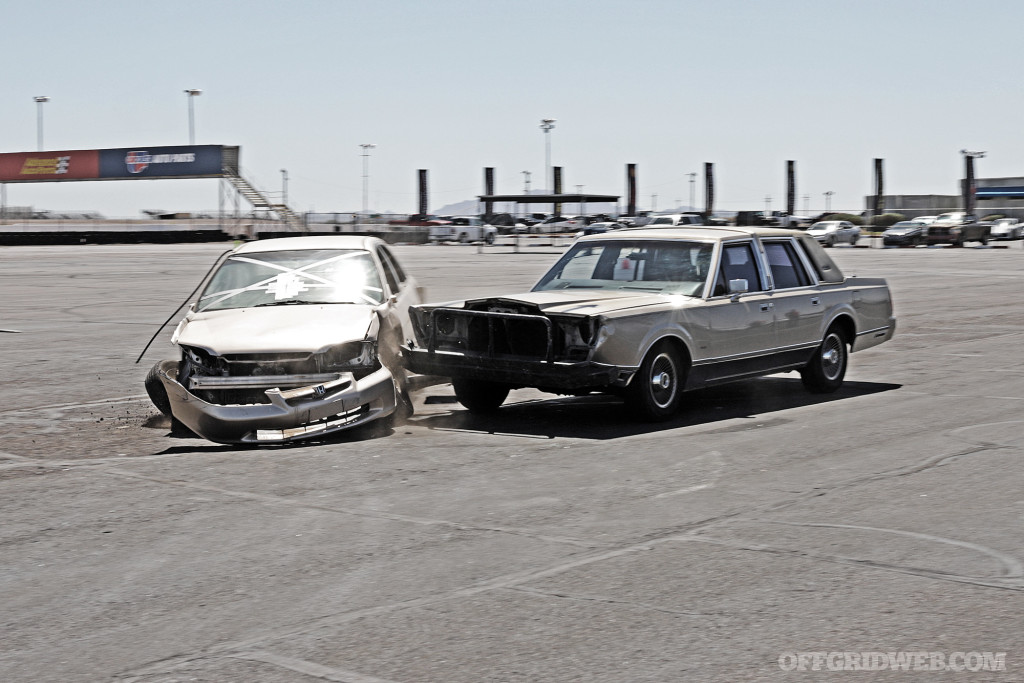
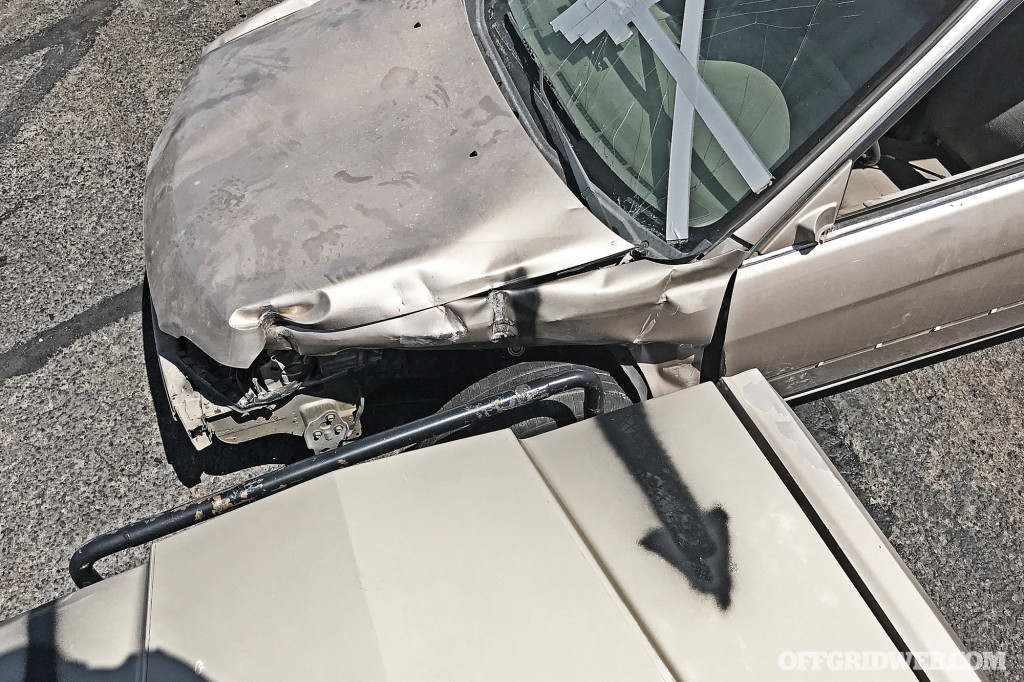




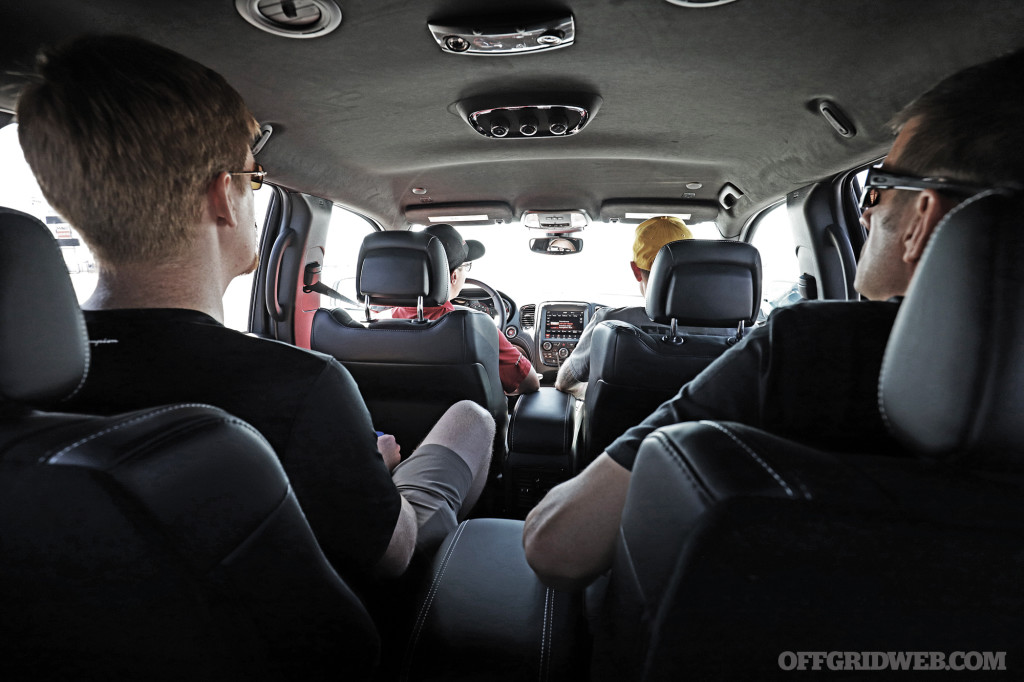

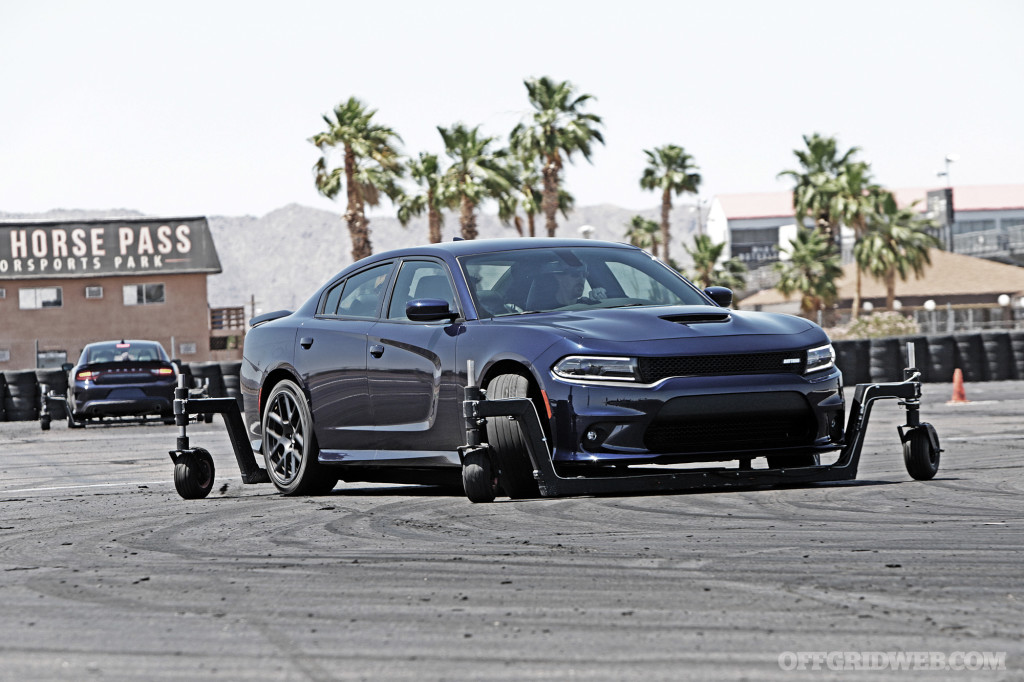
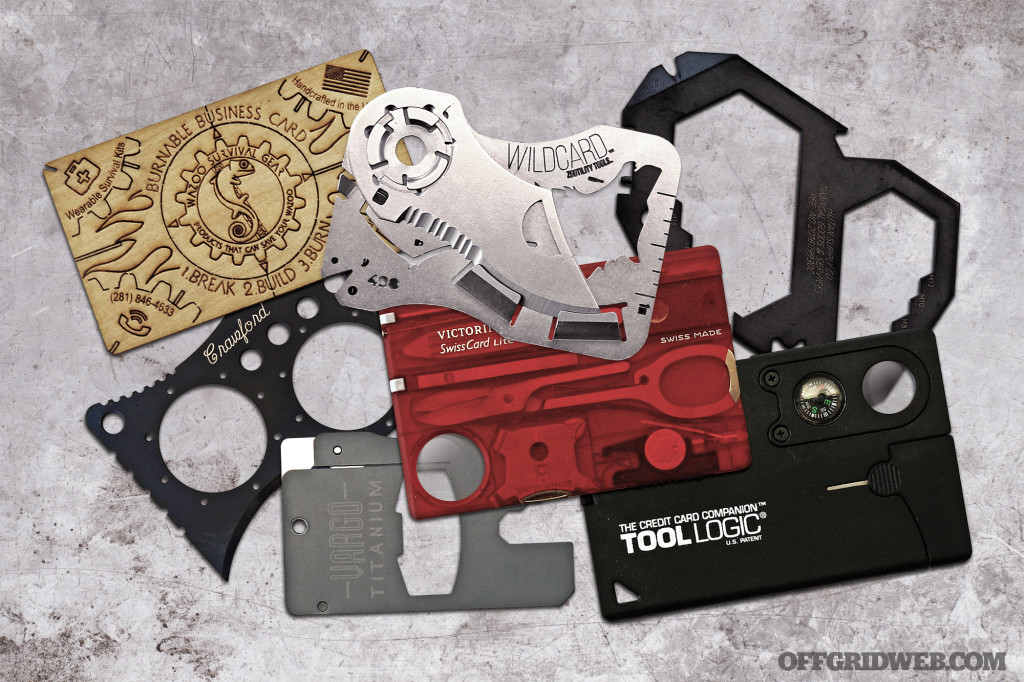
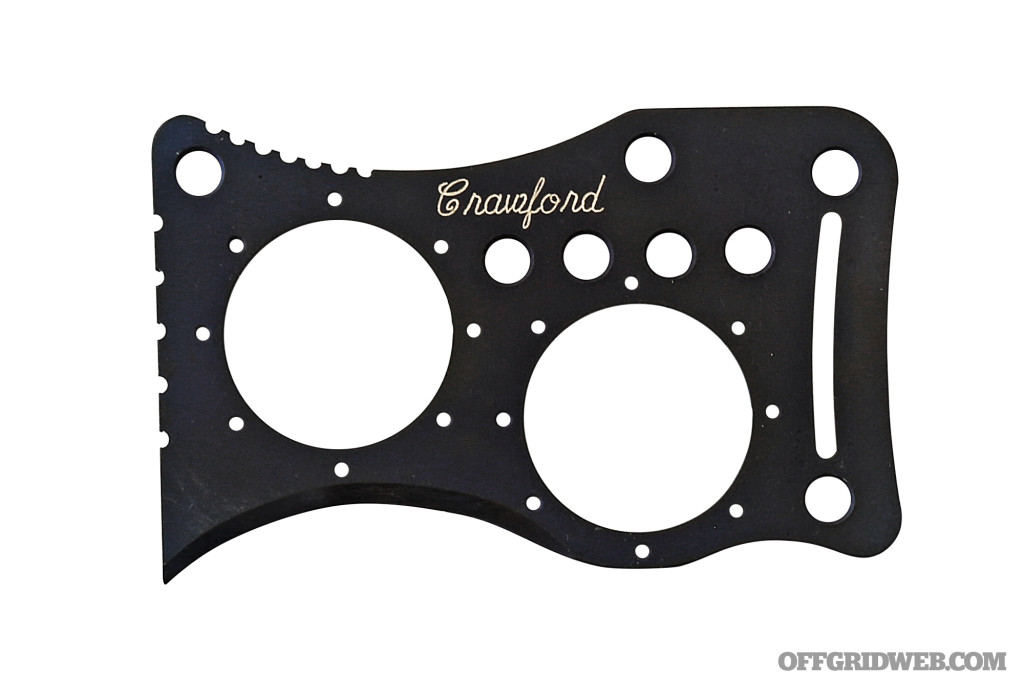
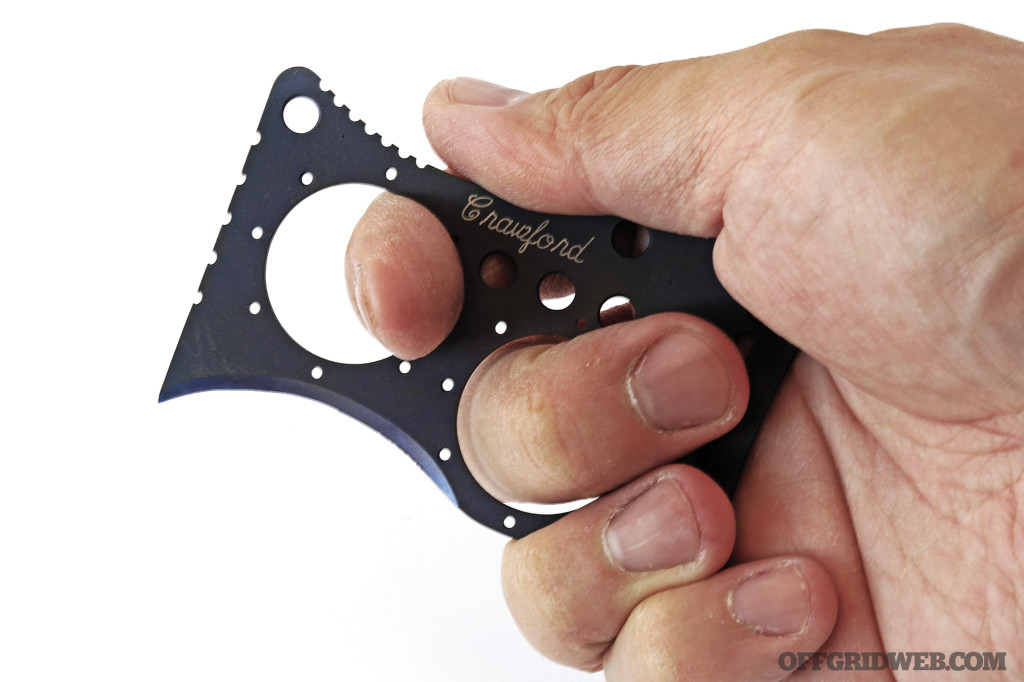
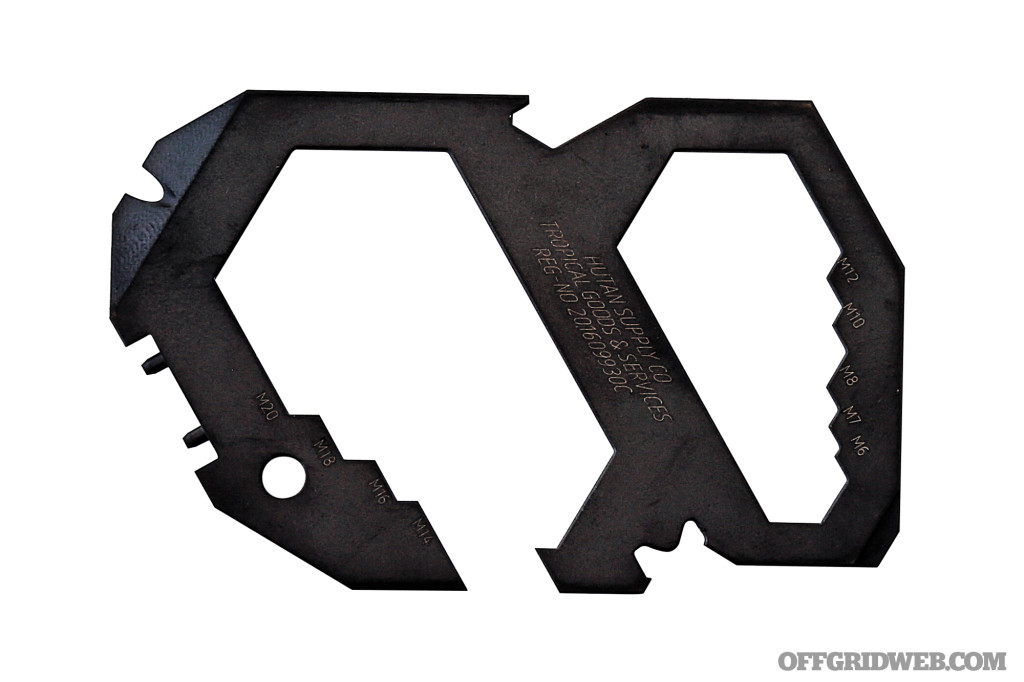
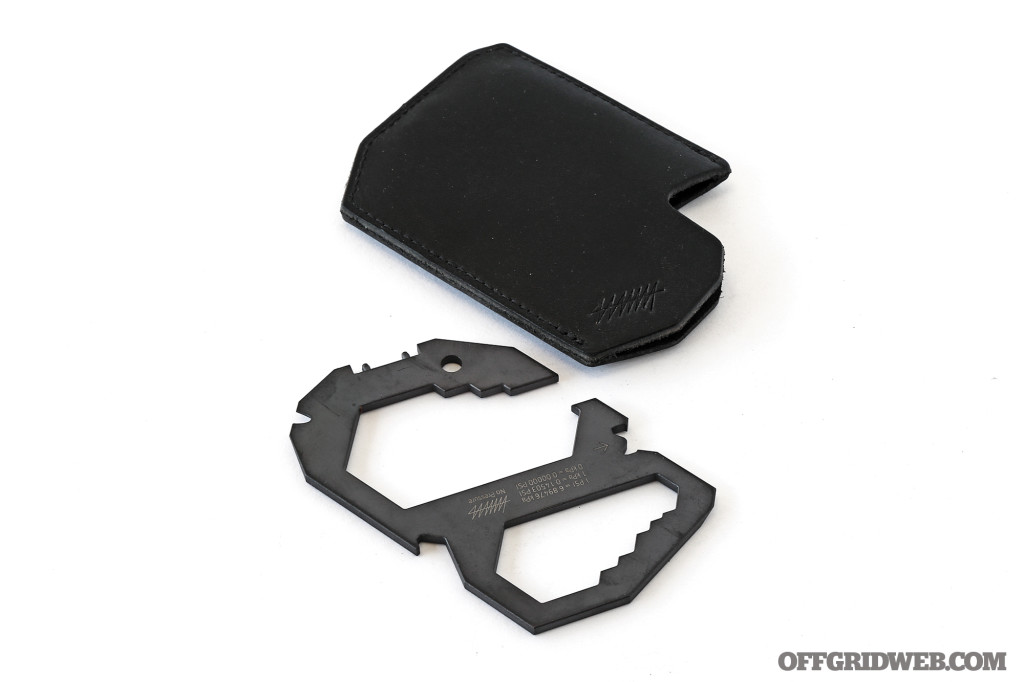
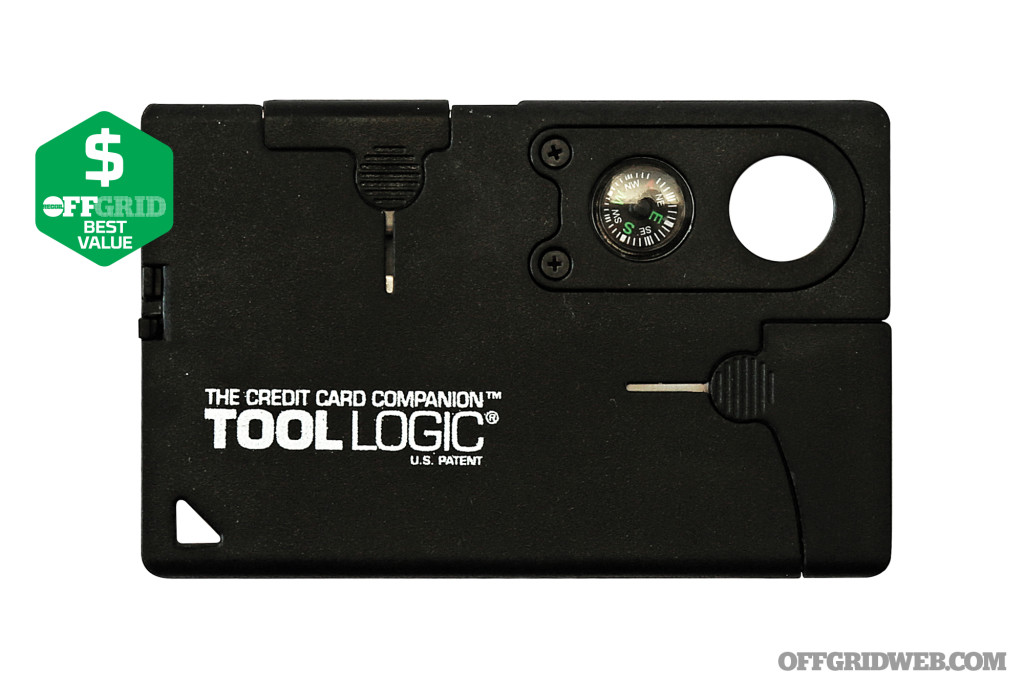
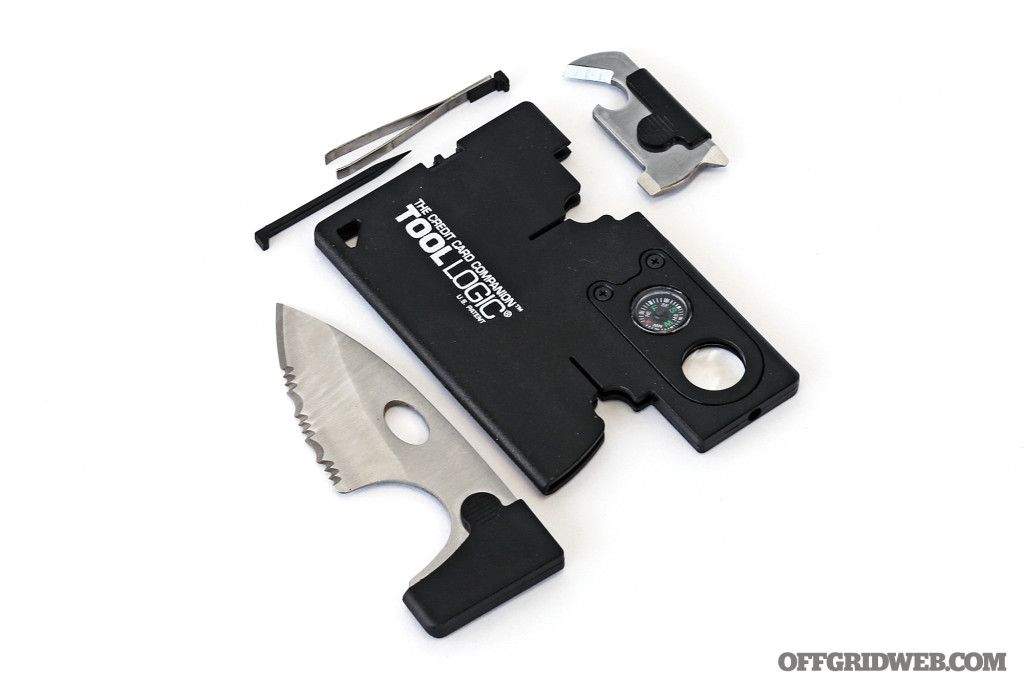
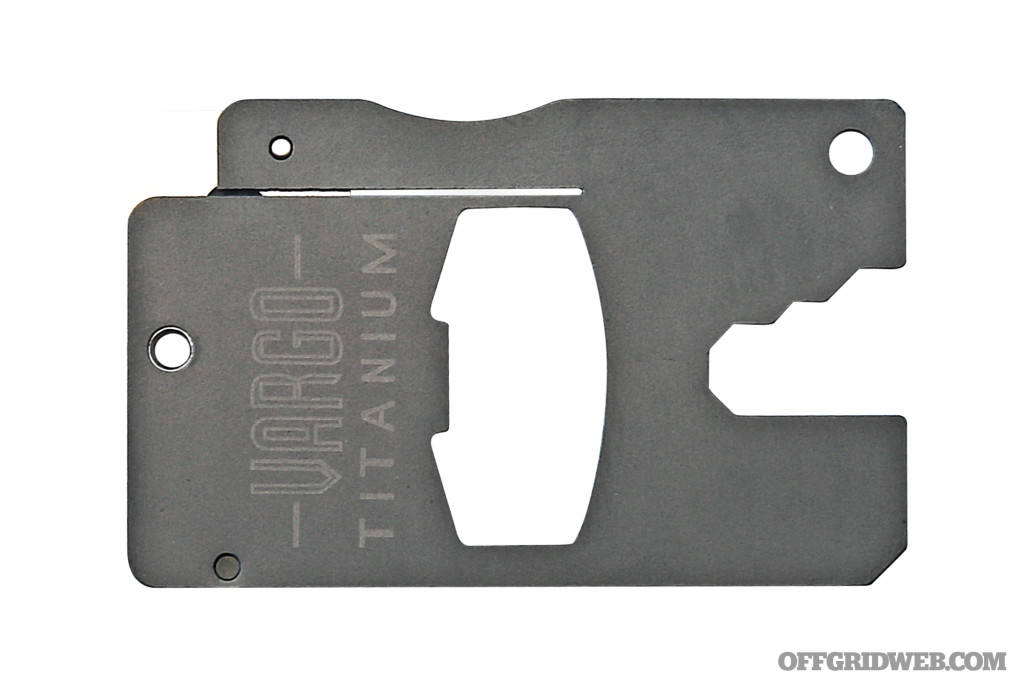
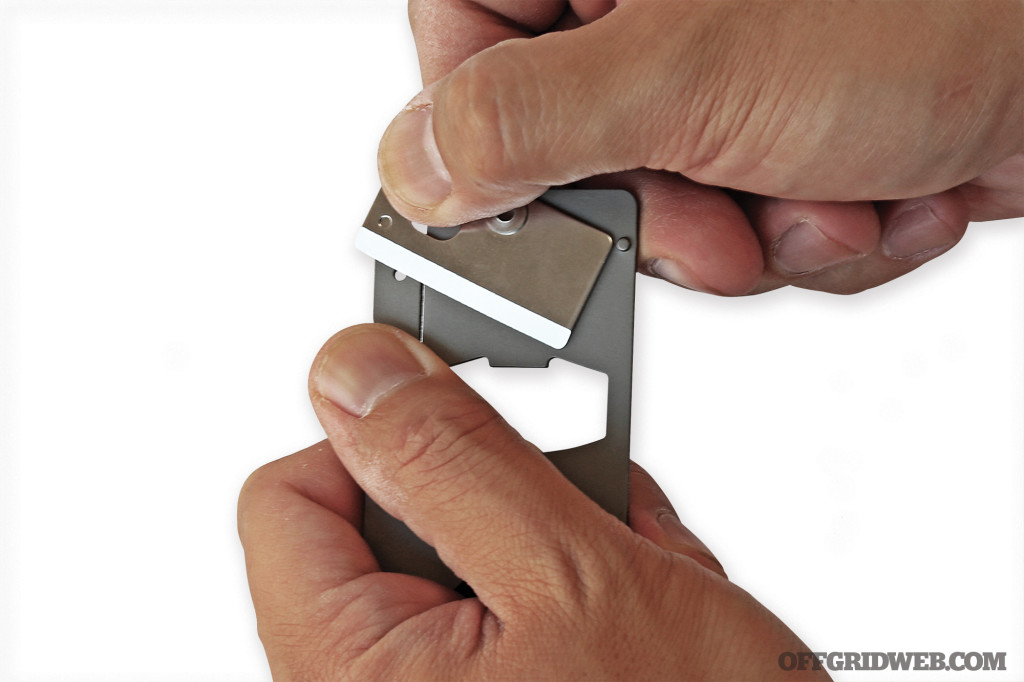
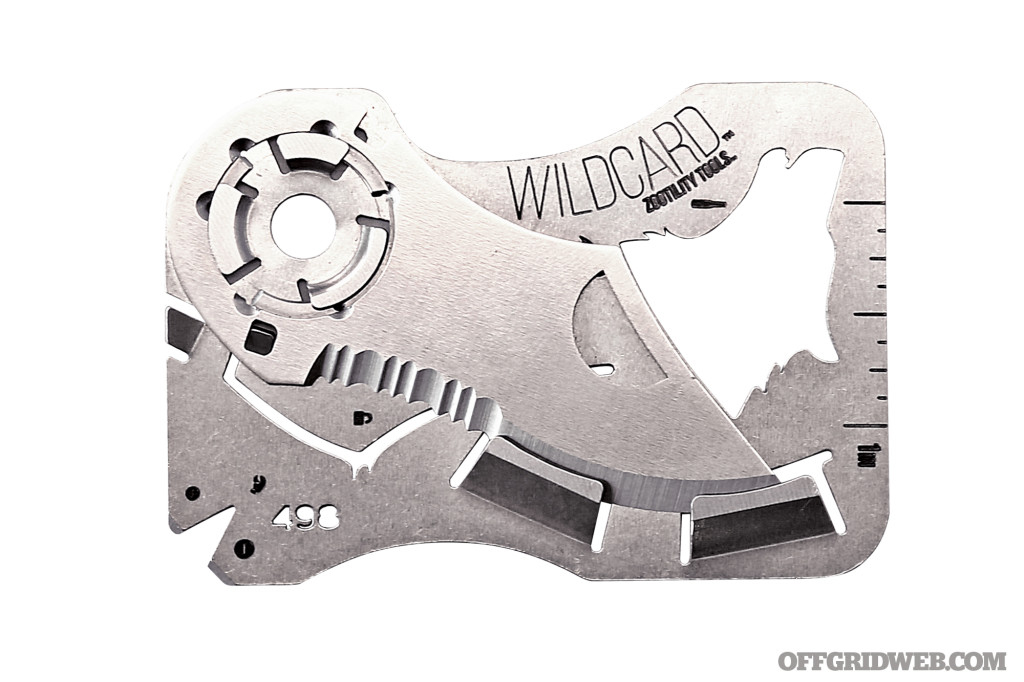
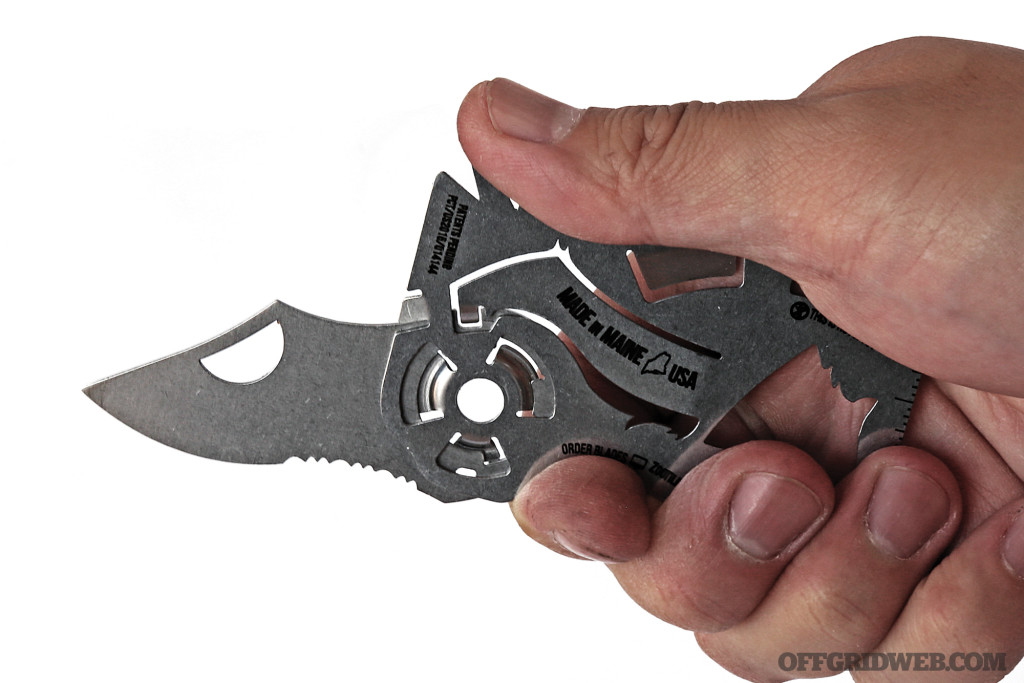
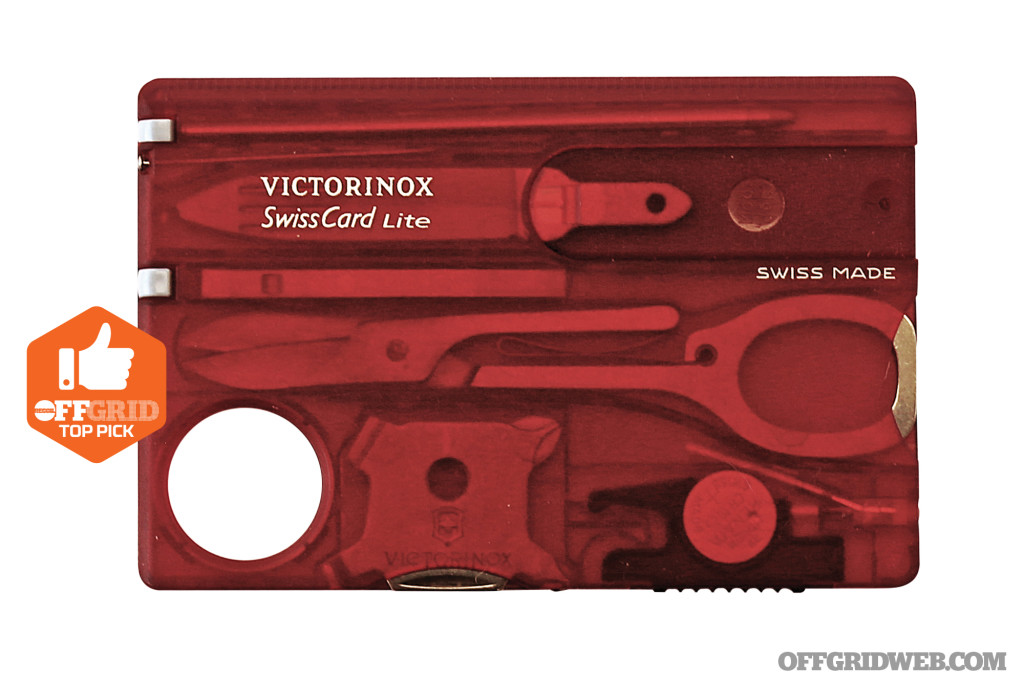
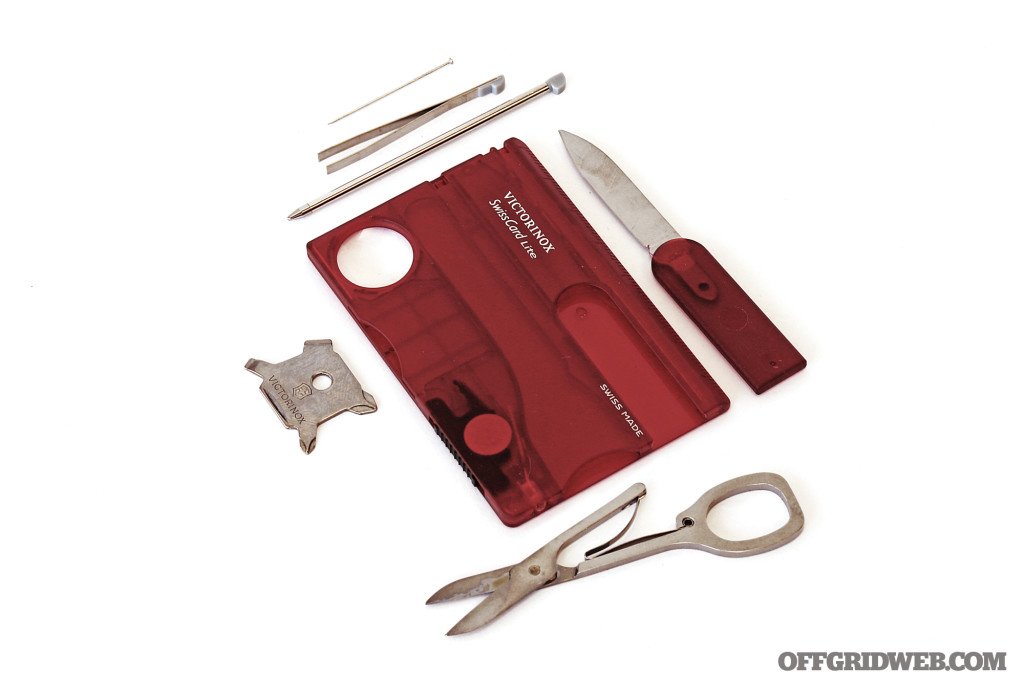
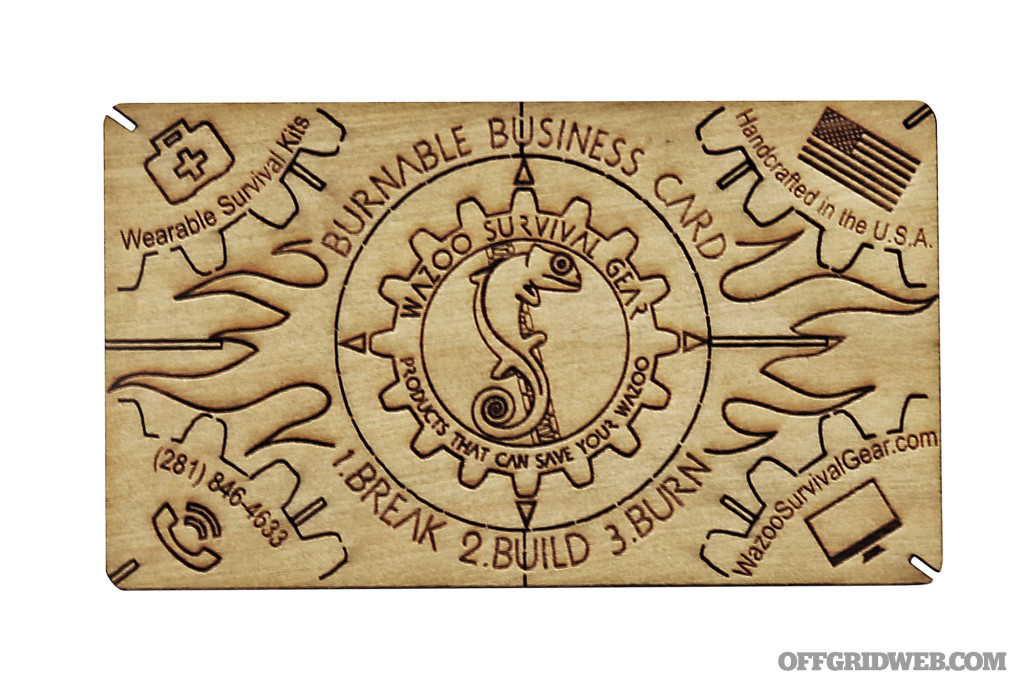
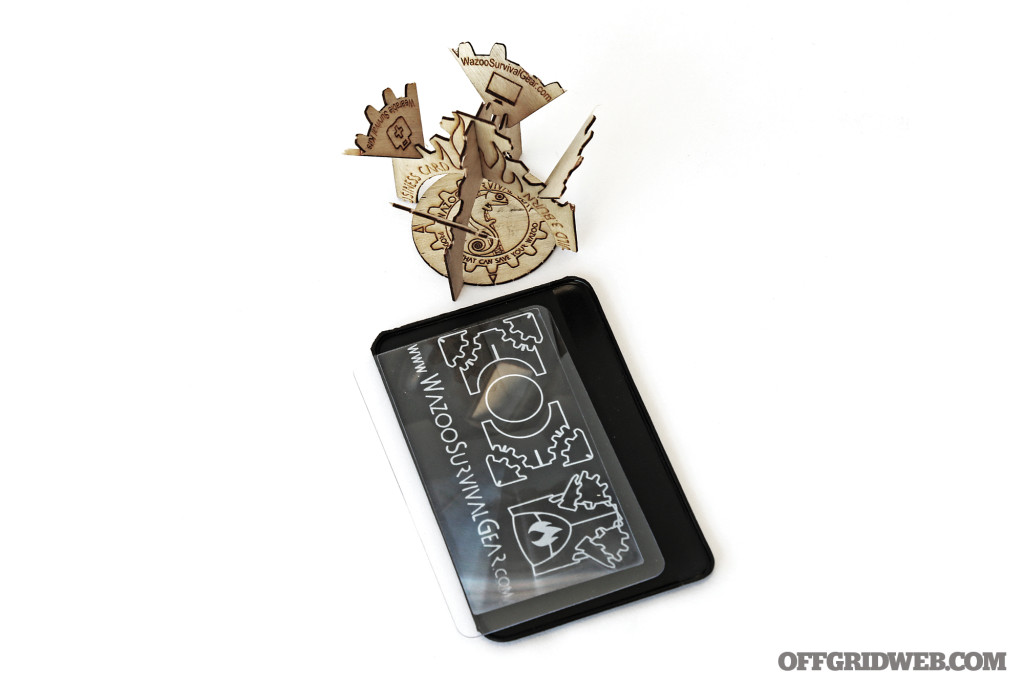
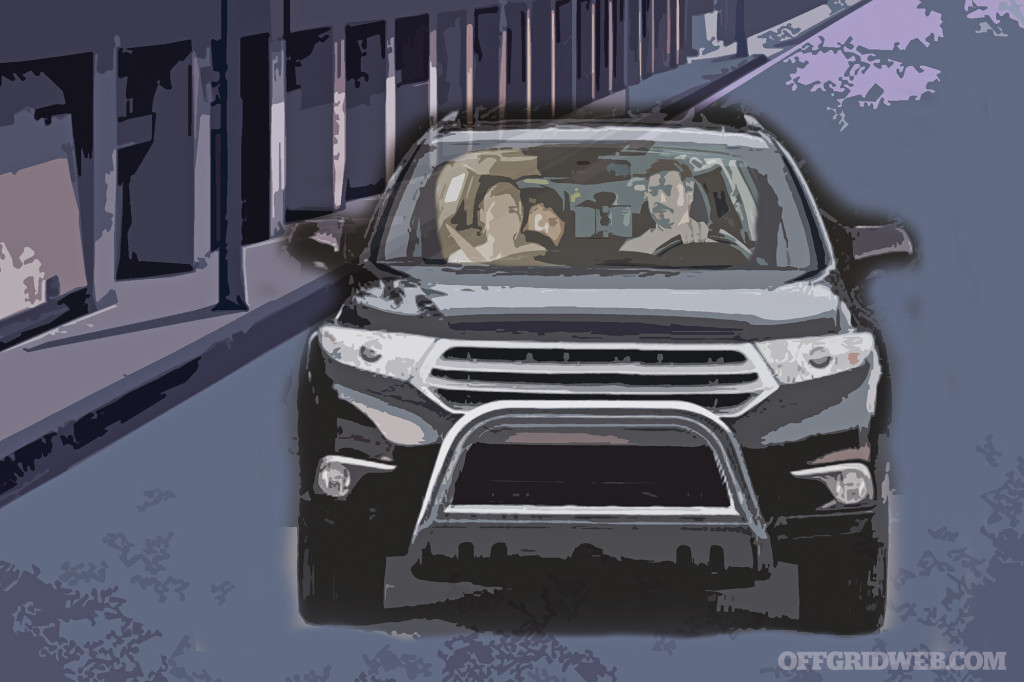

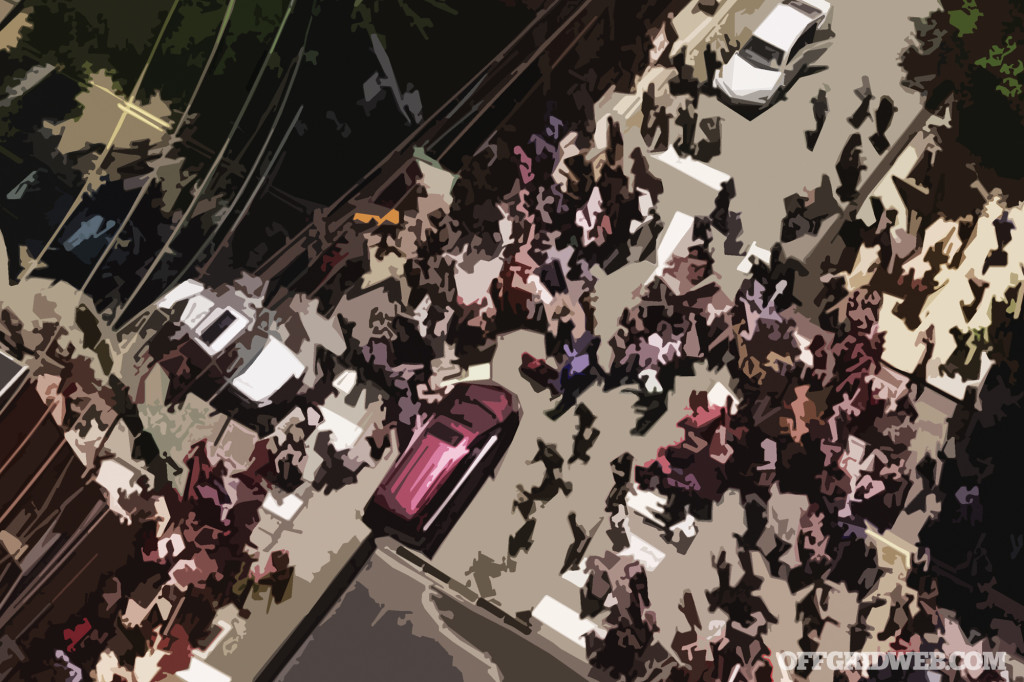
 Tim MacWelch
Tim MacWelch Jason Squires
Jason Squires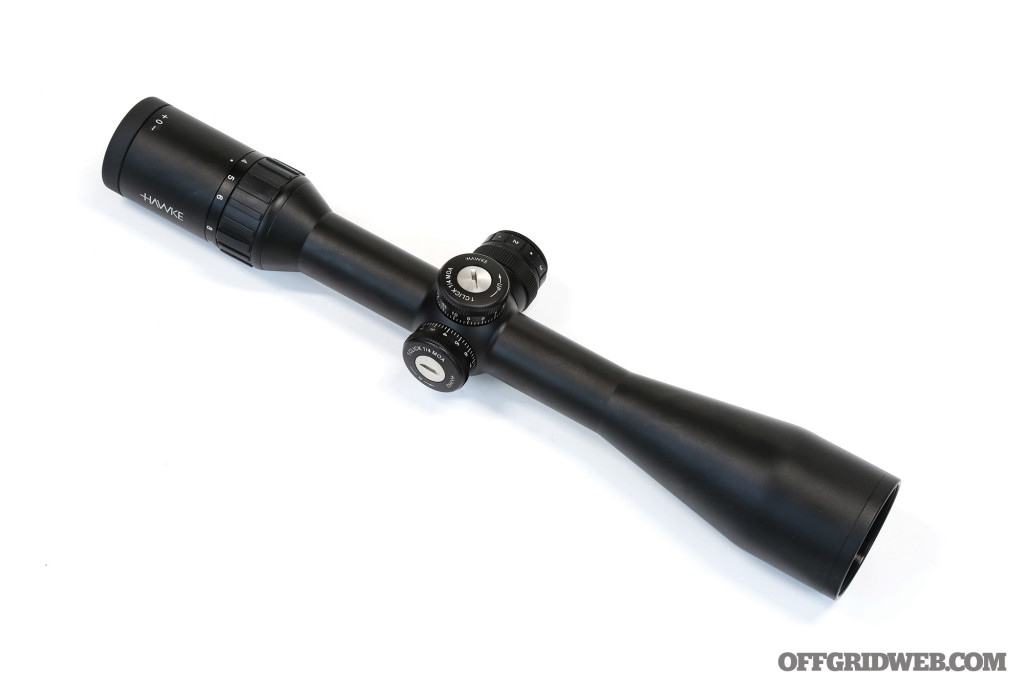
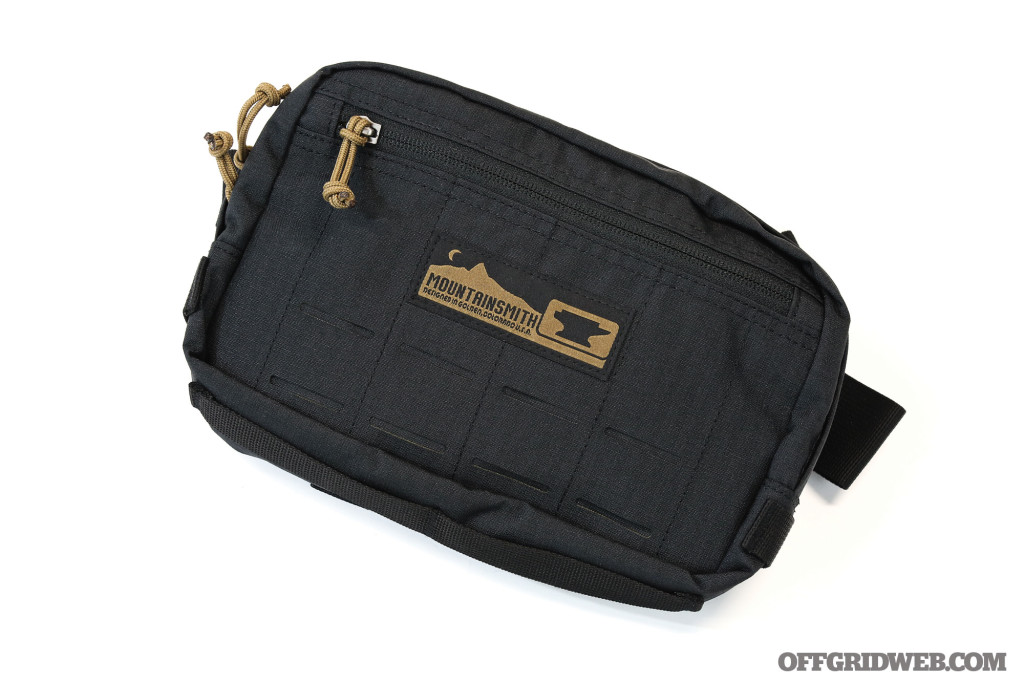
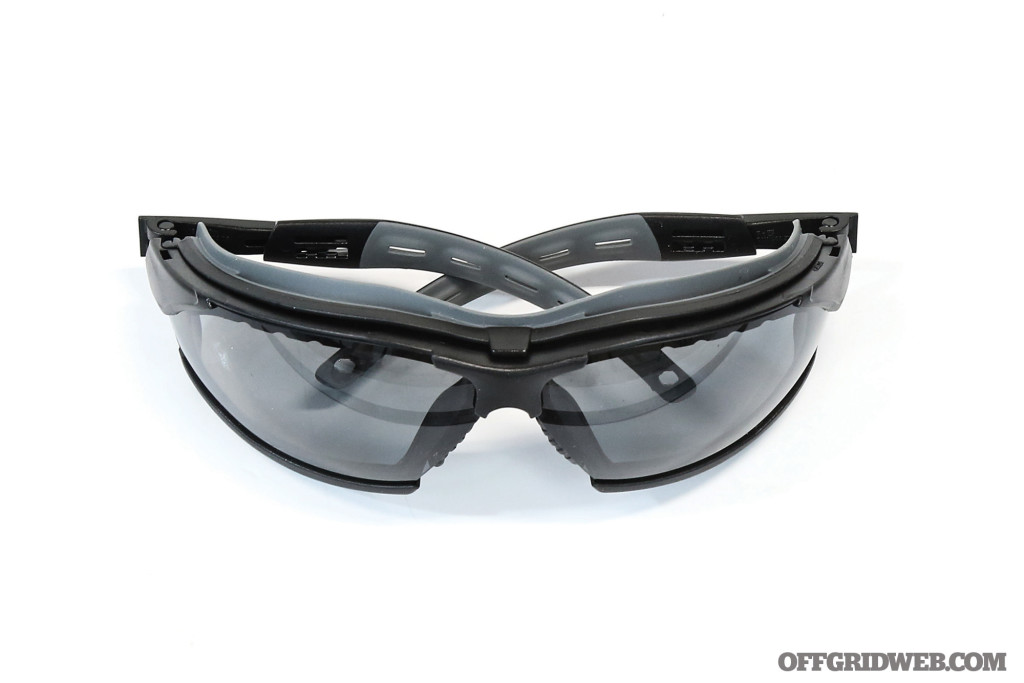
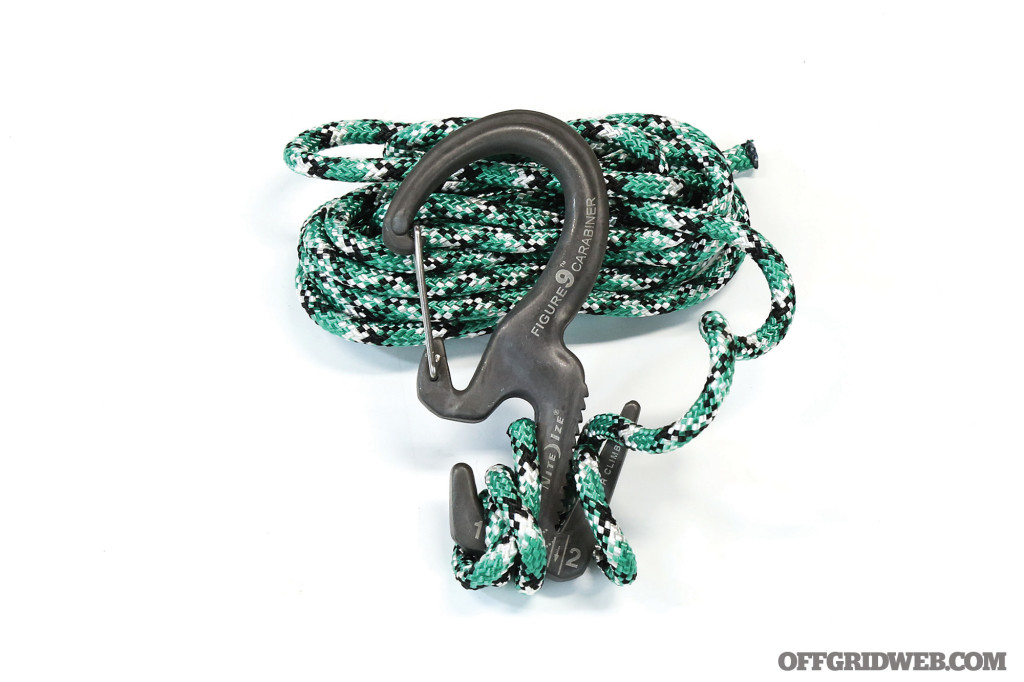
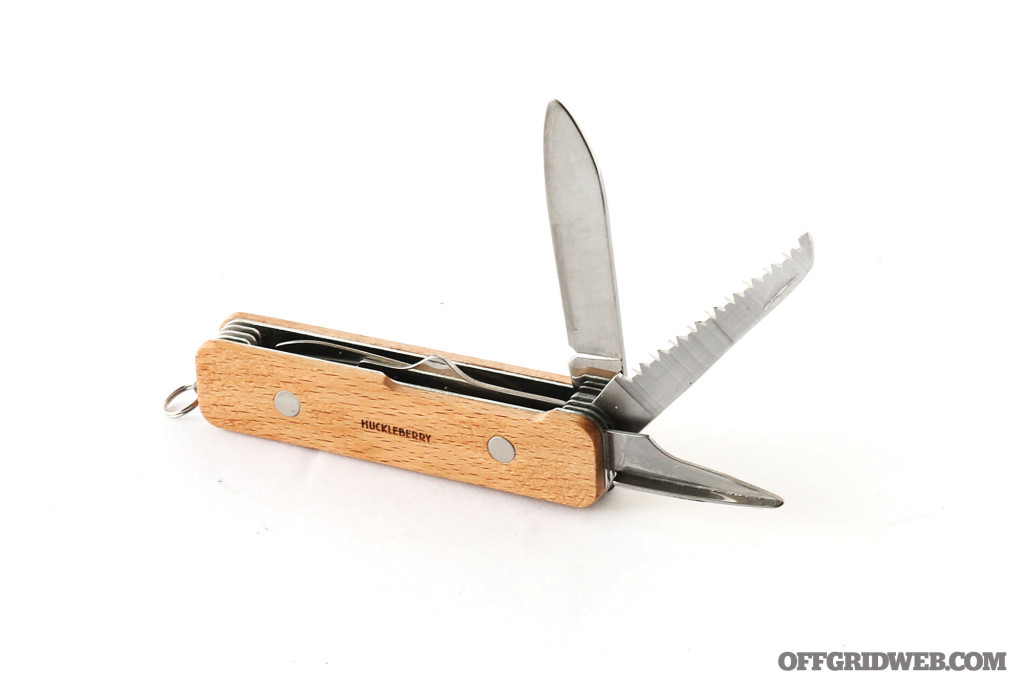
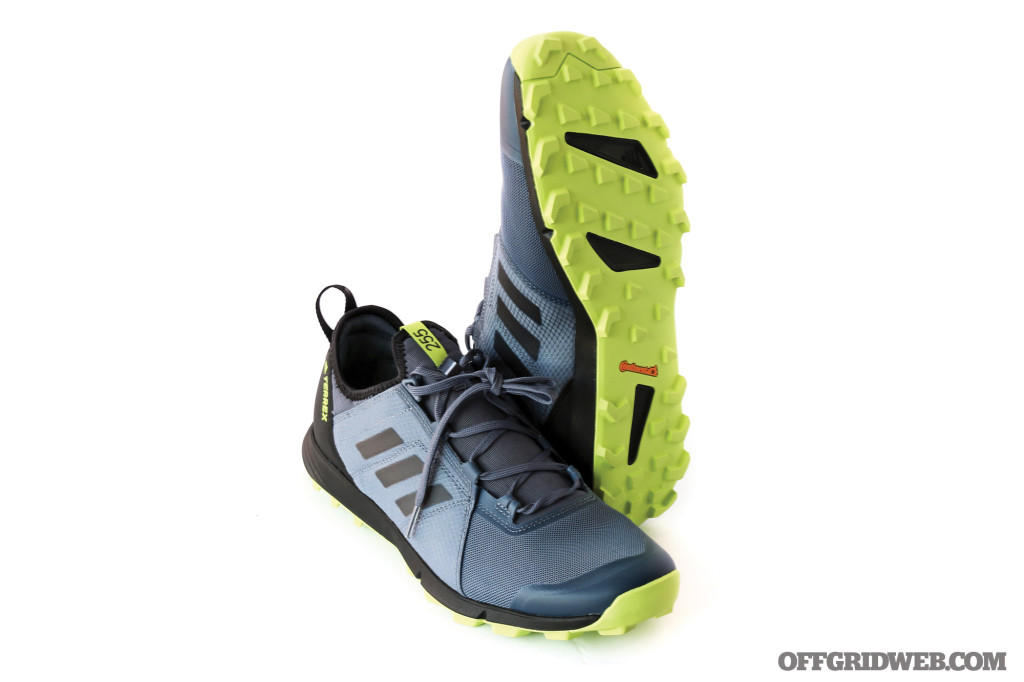
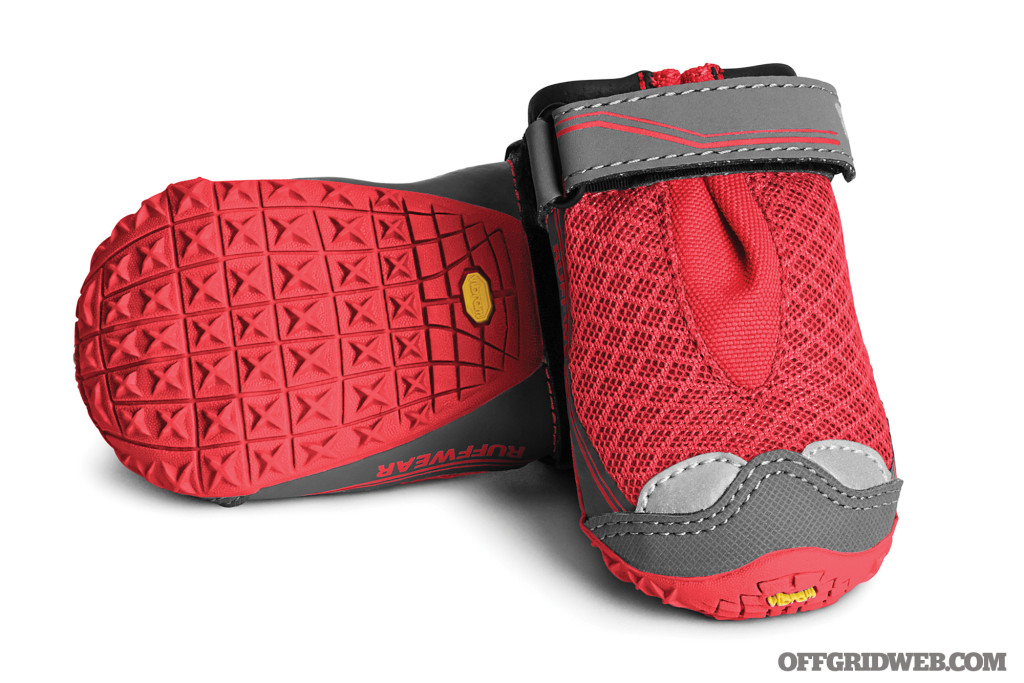
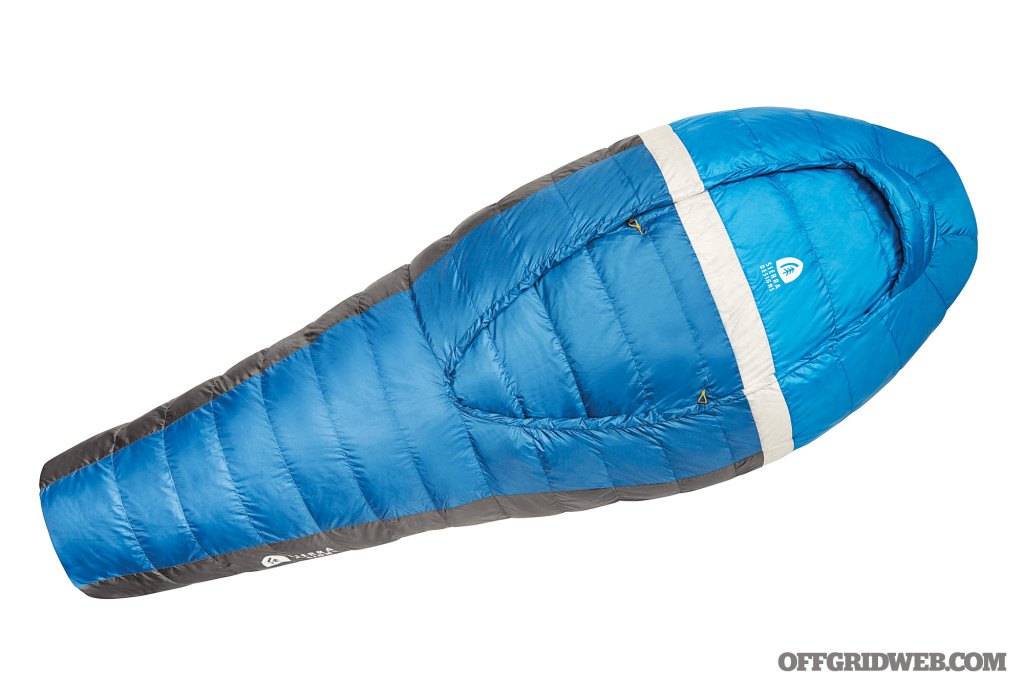
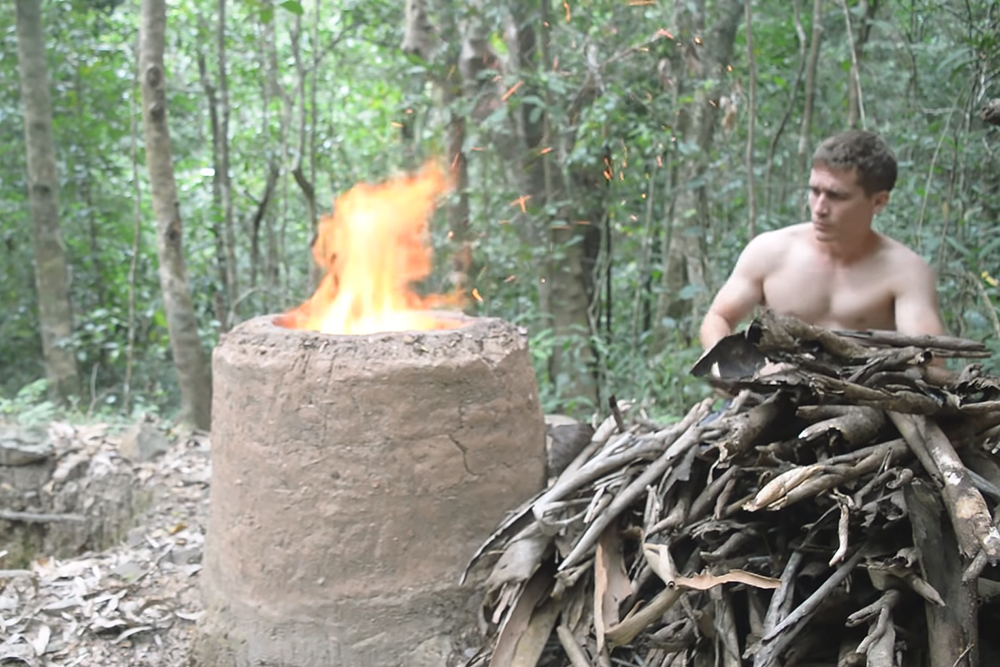
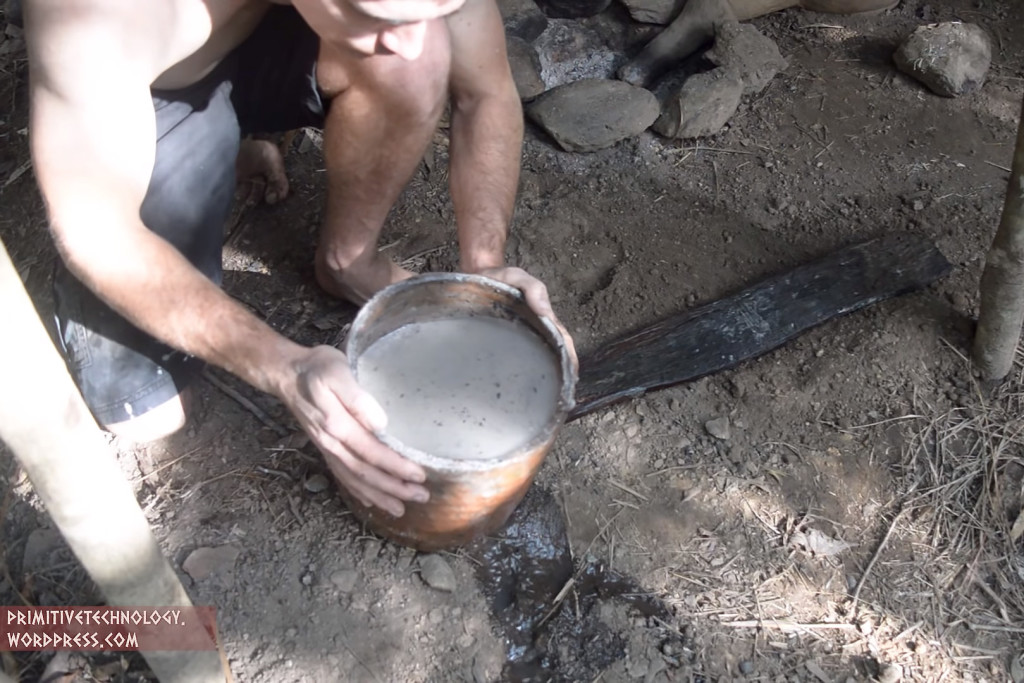
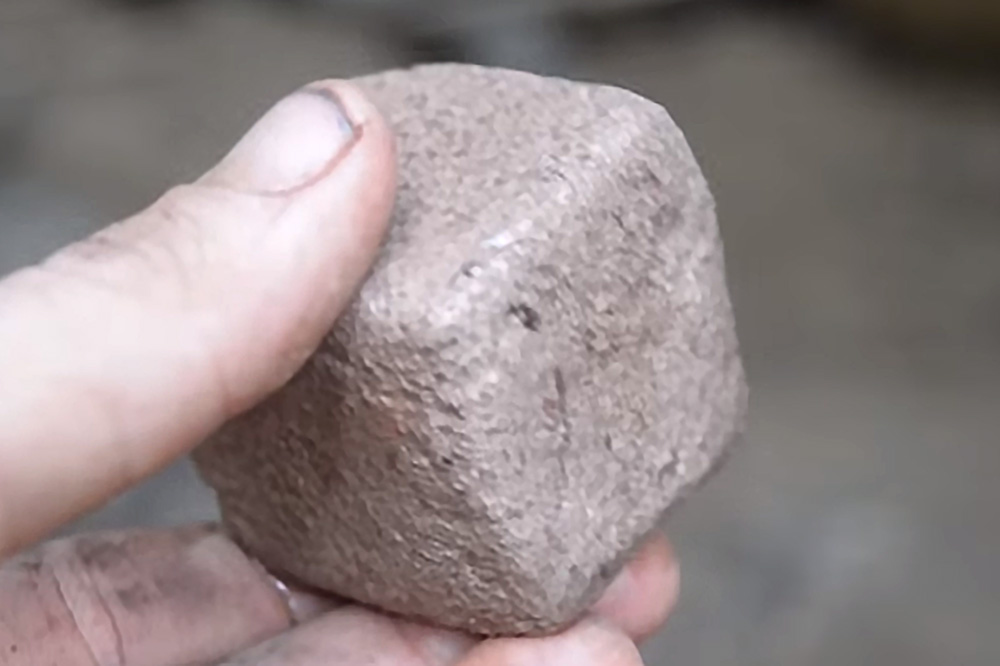
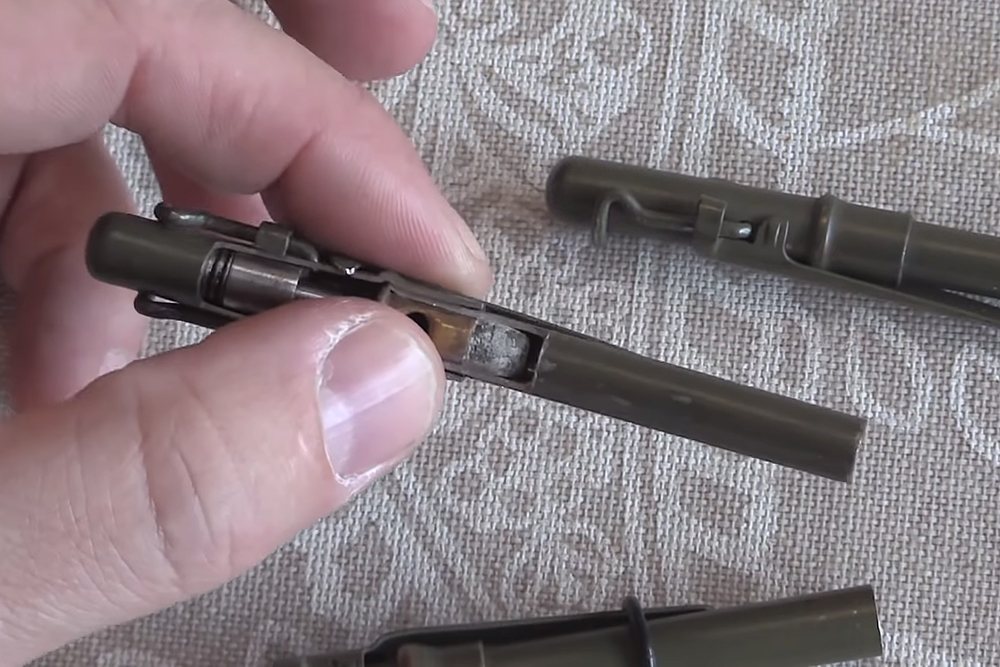
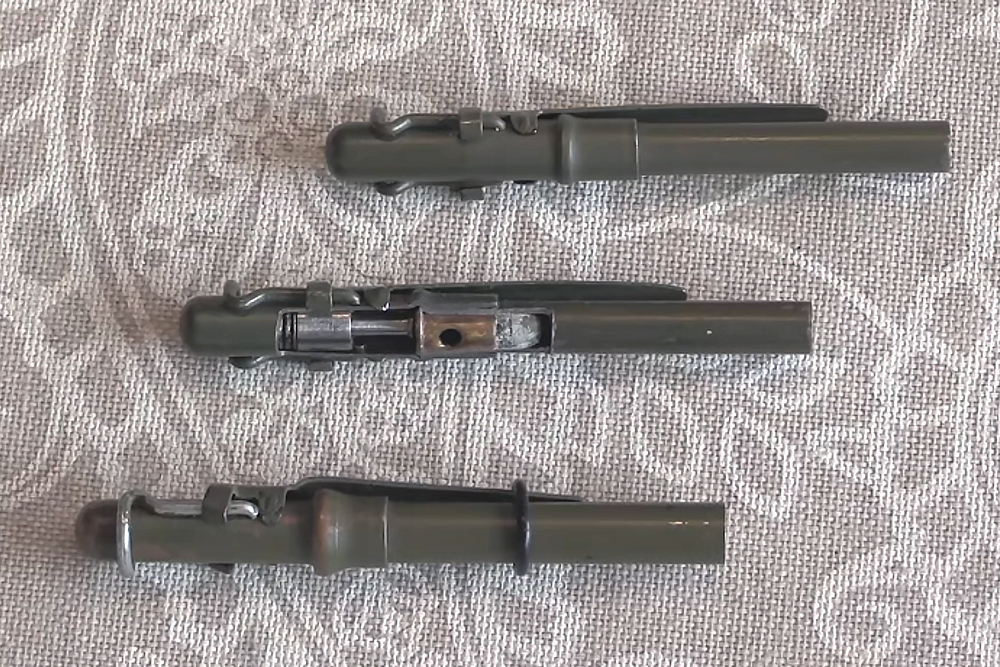



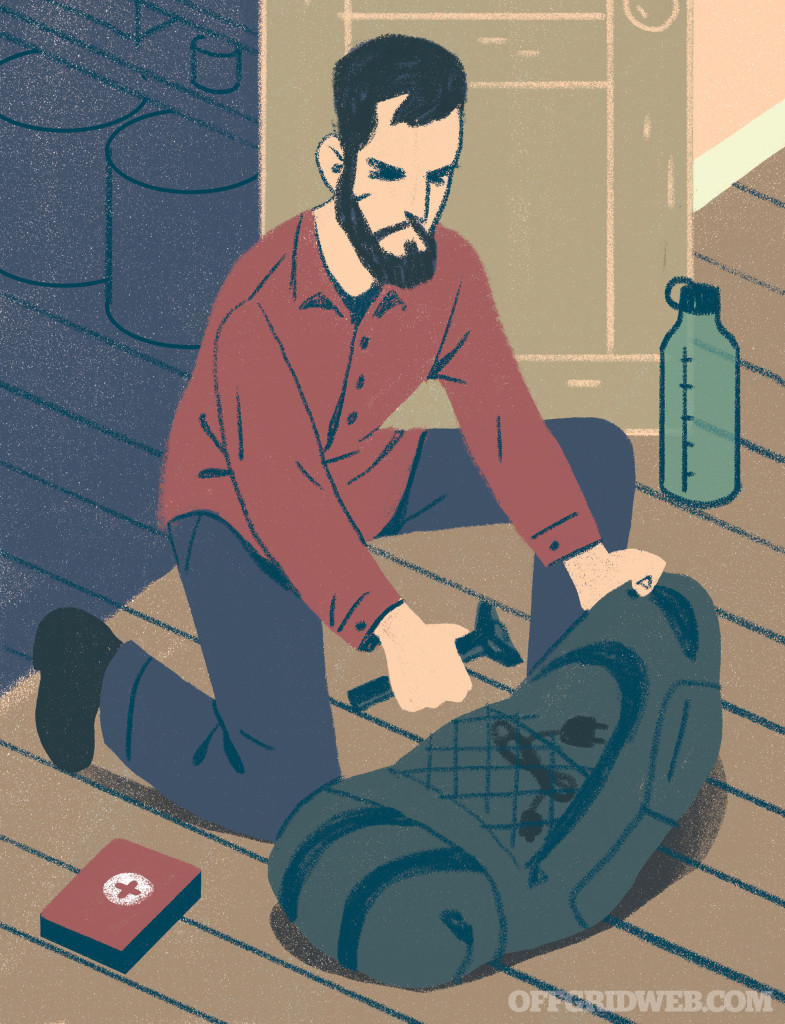
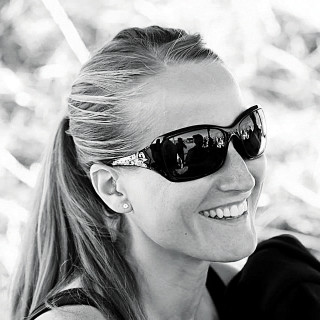 Candice Horner
Candice Horner Mike Seeklander
Mike Seeklander